
|
Photographing at the Kennebunk Blueberry Plains & a Side trip to Sanford
May was just about over on the day we planned this excursion. I’d contacted master birder Derek Lovitch (aka The Master), to serve as a guide for another day in the
field as I wished to see about locating some Grasshopper Sparrows, Upland Sandpipers and other birds known to be in the area this time of year. We met fairly early in the morning and
drove together to Kennebunk to learn what we could find.
Vesper Sparrow - a new bird for my Index...I always attempt to remain open minded about what may be found during a photography session in the field. One just never knows what you may come across on any given day and new adventure when you walk out the door. I’ve often said and will reiterate it here – one thing is absolutely certain, if you don’t get out and look you won’t find anything... It’s like Adidas states it, ‘Just Do It’. That being said my interest in this endeavor is taking the field with my cameras; I have little interest in doing otherwise. For me the allure is the challenge of the shot and what can be captured with the lens. It stands to reason that one will see many more species of birds then you can photograph and this is nearly always the case. You can view the scene and for whatever reason not get the shot (birds are quick subjects and not prone to hang about long), or perhaps worse, obtain the exposure to find later it’s not usable from any plethora of reasons. Many more images are deleted than are ever enhanced... Canon 1Ds Mark III/EF 600mm F/4L lens extended to 840mm, 1/400 second @ f/5.6, ISO 400 with flash
|
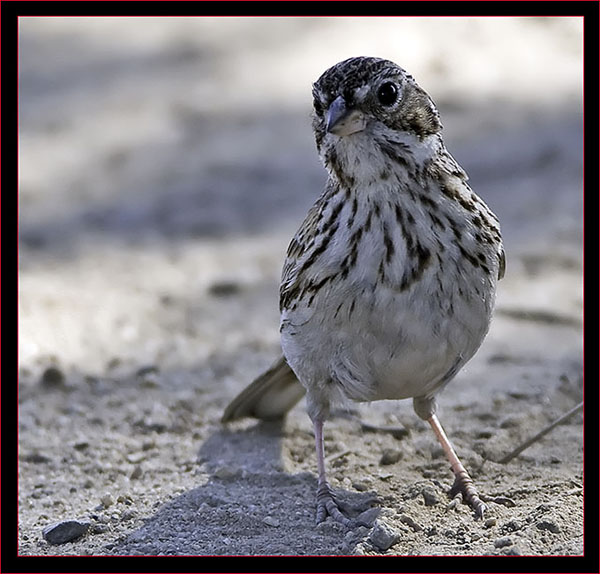
|
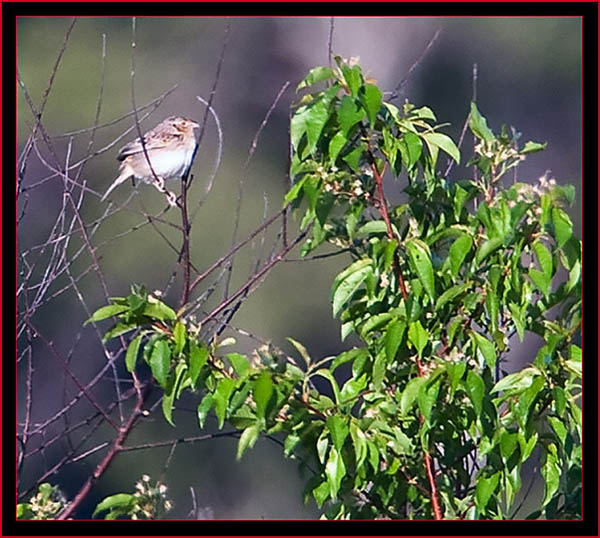
|
A distant Grasshopper Sparrow - Kennebunk Blueberry PlainsOne thing I learned about the Blueberry Plains quickly enough was that you’re not allowed to walk off the roads/paths into the grassland this time of year due to nesting birds and to protect the vegetation. This is an issue in that a closer approach to a bird is difficult once an observation is made, particularly if there’s no path anywhere near where you’d like to go. Derek located multiple specimens of the two birds we were seeking, the Grasshopper Sparrow and Upland Sandpiper. The problem was they were far distant with no way to approach across the grassland... I mean far enough away that you’d need binoculars to keep track of them & nearly invisible to the naked eye. Derek’s power of observation is phenomenal – I’m no novice to this type of birding but he certainly impressed me... |
A long distance photograph of a Upland Sandpiper...The Blueberry Plains consists of 1100 acres of protected grassland habitat under the auspices of The Nature Conservancy and the Maine Department of Inland Fisheries & Wildlife. Several endangered species of vegetation and wildlife make the plains home and several species of birds can be found within the environs that are not prone to be found elsewhere around the state. Canon 1Ds Mark III/EF 600mm F/4L lens extended to 840mm, 1/250 second @ f/5.6, ISO 640
|
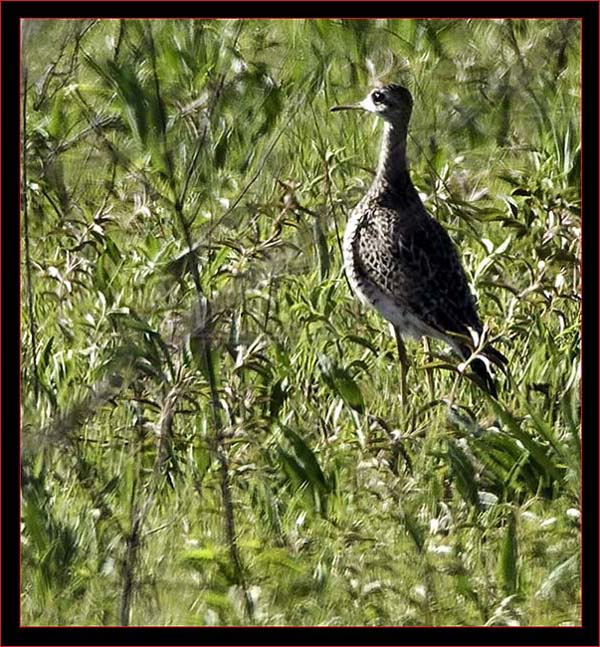
|
Vesper Sparrow Sequence
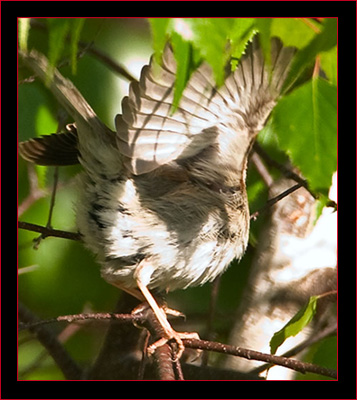
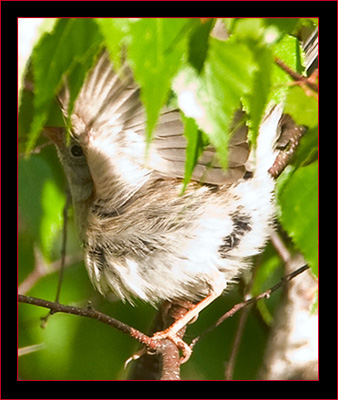
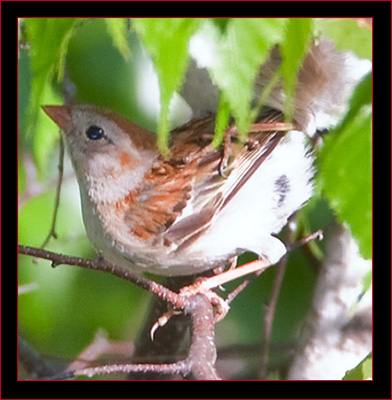
|
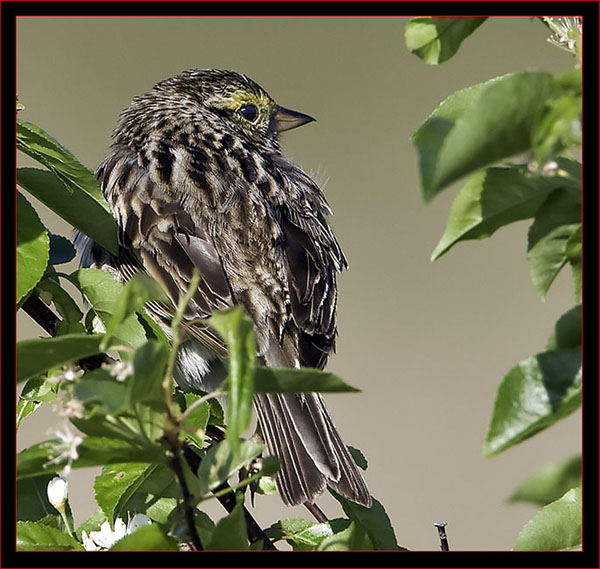
|
It wasn't all at long distance - there were many Savannah Sparrows in the grasslands |
Savannah Sparrow Views
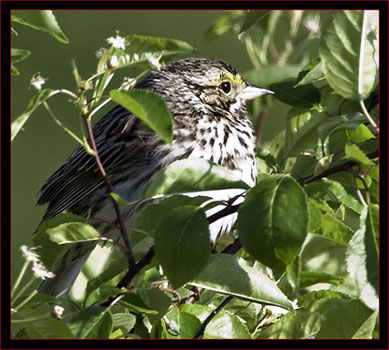
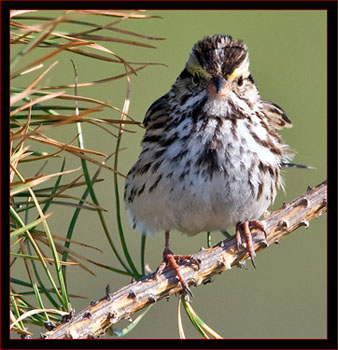
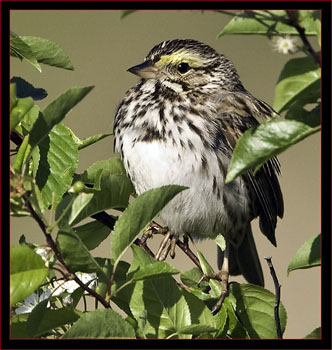
|
Red-tailed Hawk flyby, Chipmunk & a Prairie Warbler
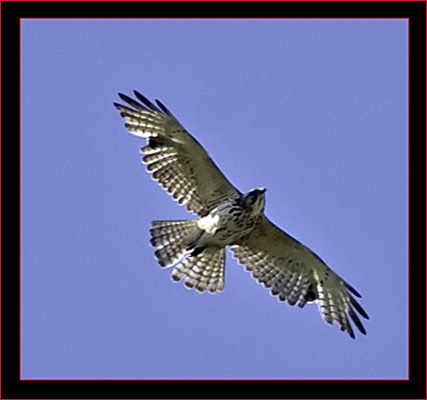
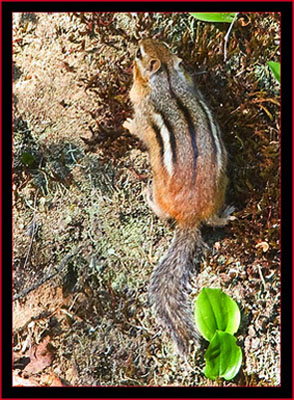
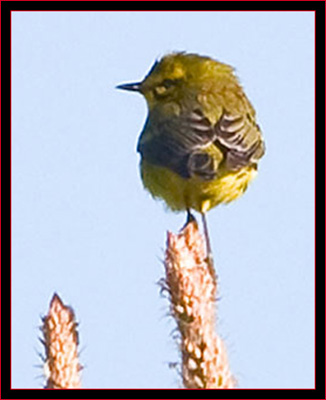
|
An excellent digital capture of a Vesper Sparrow - I was pleased with the image group of this species
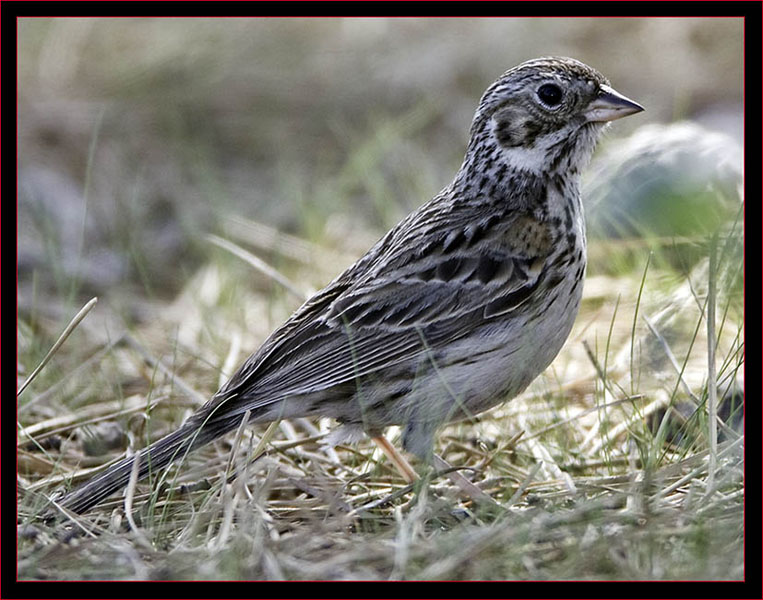
|
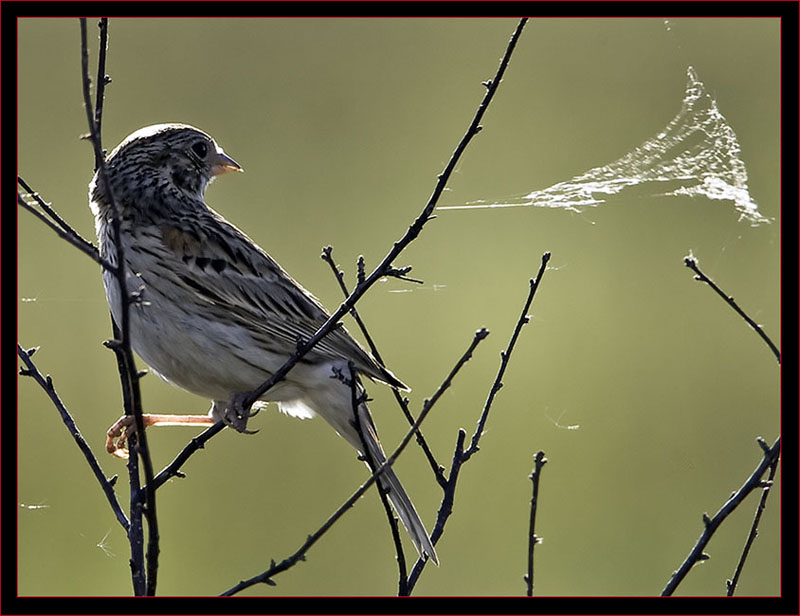
|
A final image of a Vesper Sparrow as we leave the grasslandsWe checked several areas; Derek showed me another spot near a ball field that served as a backdoor to the grasslands and we birded this area for a time. Afterwards we left the Blueberry Plains & drove over to Sanford. As odd as this may sound, the Sanford Sewage Treatment Facility has an open water pond that is a terrific birders spot. I’d heard about this before but never visited. It was an excellent stop and well worth the time... Canon 1Ds Mark III/EF 600mm F/4L lens extended to 840mm, 1/400 second @ f/10, ISO 640 with flash
|
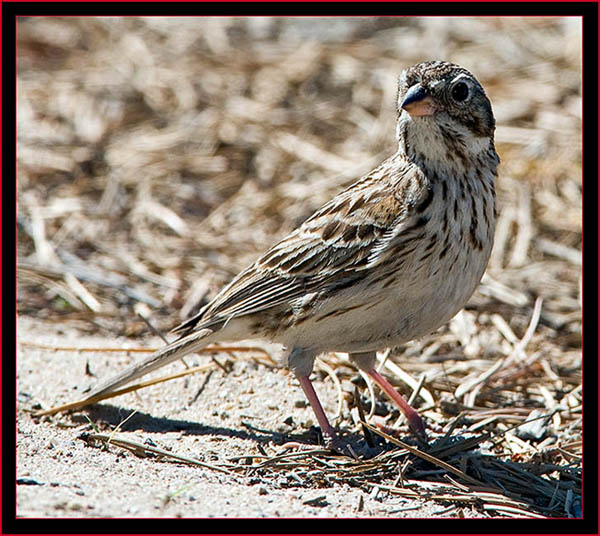
|
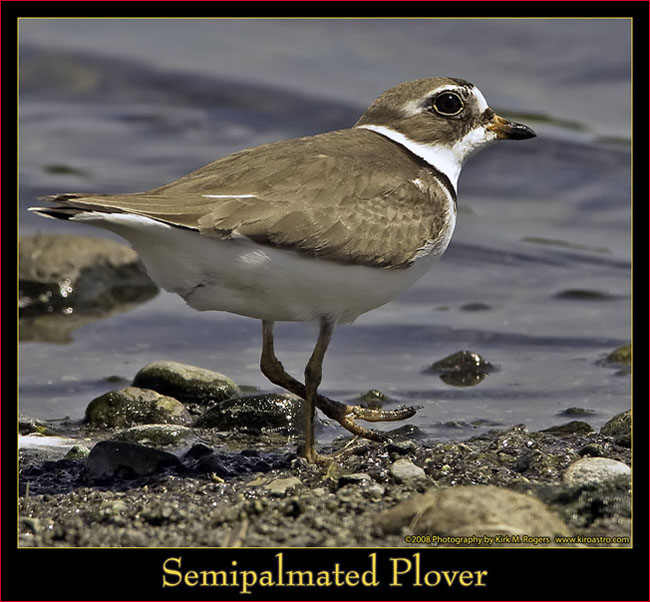
|
Semipalmated Plover photographed in SanfordCanon 1Ds Mark III/EF 600mm F/4L lens extended to 840mm, 1/400 second @ f/10, ISO 640 with flashThe treatment plant area has a great deal of potential... You need to go during working hours as the ponds are enclosed within a gated & locked chain link fence. There’s no issue with visiting but you need to sign in and let the staff know what you’re planning. I was impressed with my first views around the facility with multiple birds about. There were shorebirds foraging in their usual manner and swallows flying and perched. Derek had come here often and had a good idea about where to go for any particular type of observation. |
Semipalmated Plover group with one Least Sandpiper, 2nd from left - Sanford, Maine
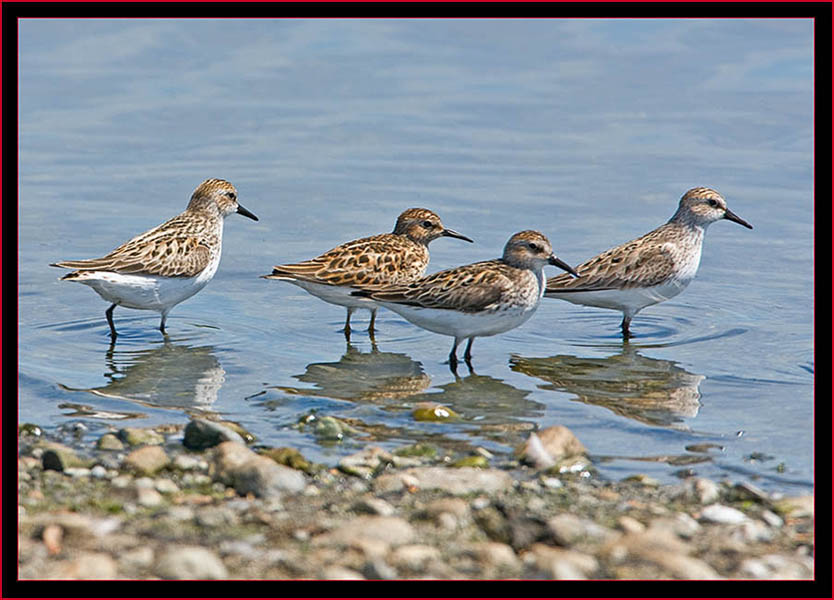
|
A foraging Killdeer turned to check me outShorebirds were well represented at this spot with multiple Semipalmated & Spotted Plovers, Killdeer, Least Sandpipers and few others Derek pointed out. These aren’t easy to keep straight for identification because they look similar in some cases in less than adult plumage. I was pleased to get some good exposures on the Least Sandpipers, one of the smallest and most widely distributed of the peeps. Canon 1Ds Mark III/EF 600mm F/4L lens extended to 840mm, 1/400 second @ f/10, ISO 640 with flash
|
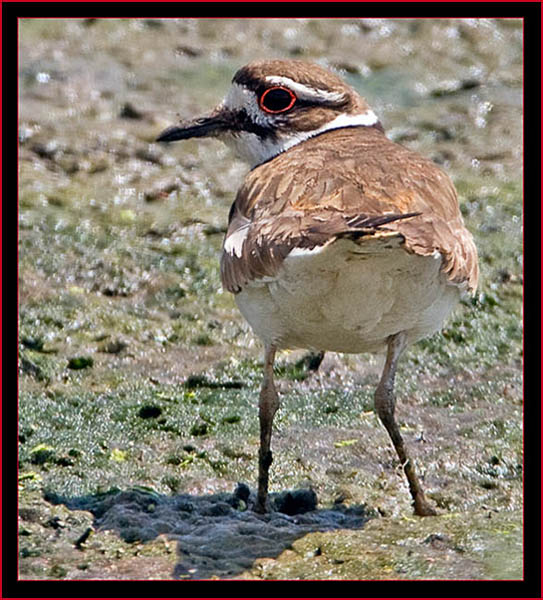
|
Least Sandpiper views - Sanford, Maine
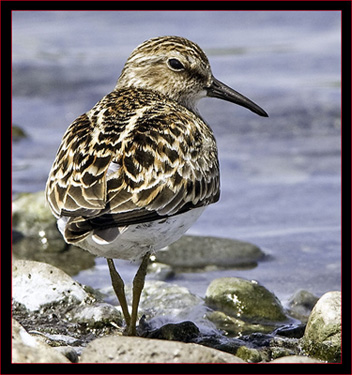
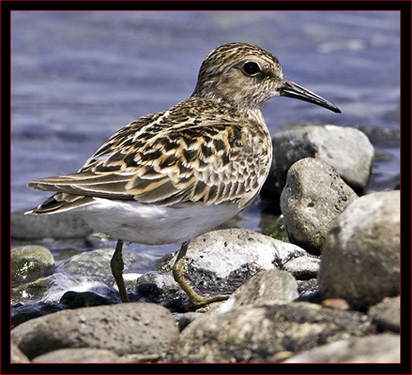
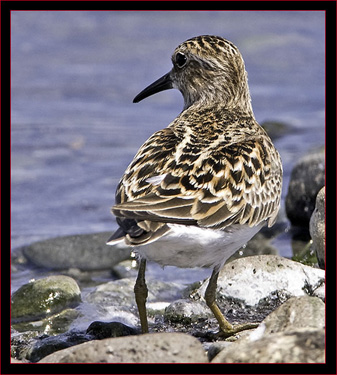
|
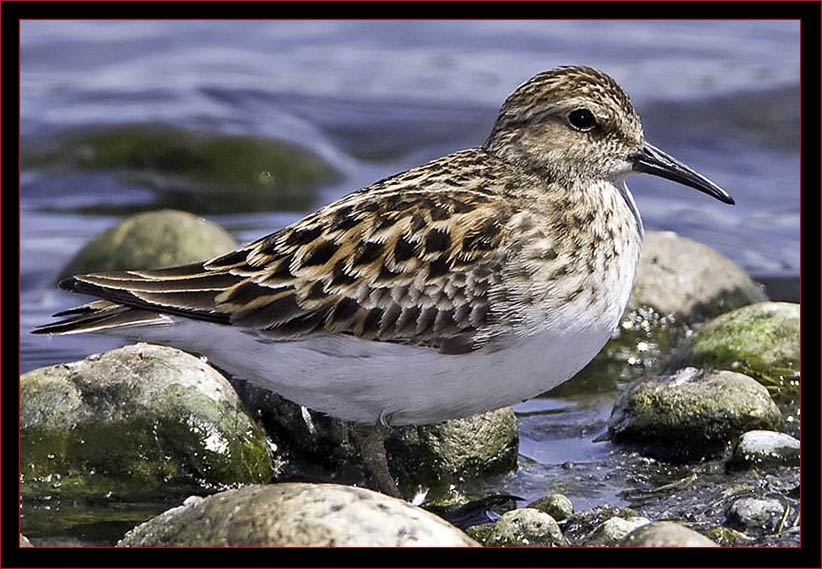
|
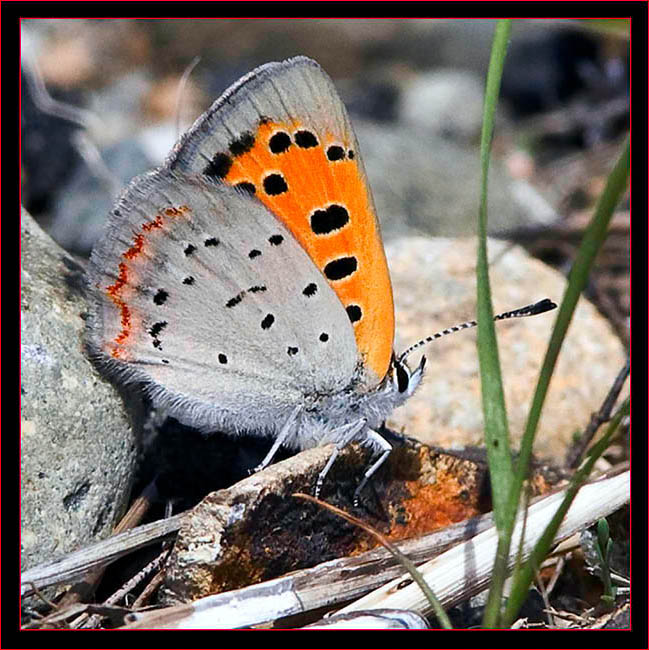
|
One of the last images from this session - American Copper Butterfly (Lycaena phlaeas)Canon 1Ds Mark III/EF 600mm F/4L lens extended to 840mm, 1/800 second @ f/10, ISO 640 with flashAs we walked toward the gate Derek spotted this tiny American Copper butterfly and I set up to take a few exposures. It can be challenging to get a shot on such a small subject at 840mm focal length because you have to step back quite far to achieve focus. This was at the very end of our session for the day and we headed for home. |
Final Sessions at Evergreen Cemetery - May 2008
A Gray Catbird close up viewCanon 1Ds Mark III/EF 600mm F/4L lens extended to 840mm, 1/250 second @ f/10, ISO 640 with flash
|
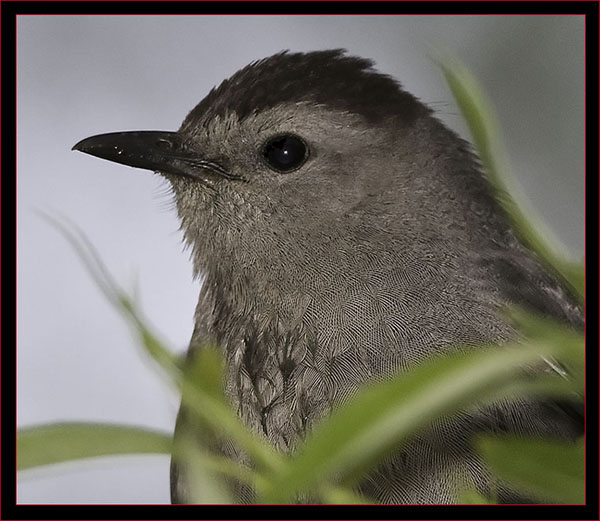
|
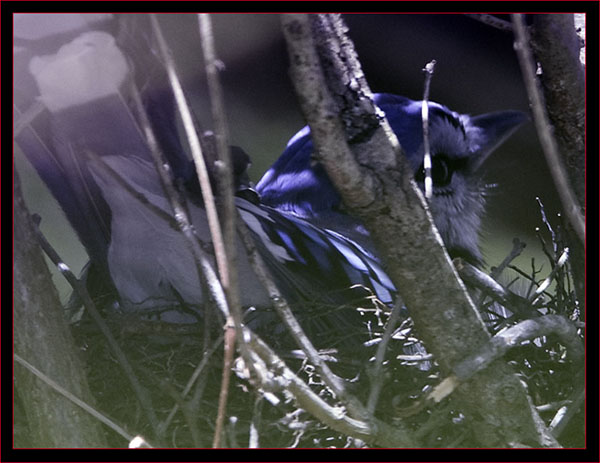
|
Blue Jay nest sitting - Evergreen CemeteryCanon 1Ds Mark III/EF 600mm F/4L lens extended to 840mm, 1/125 second @ f/10, ISO 400 with flashI’d crossed paths with a fellow photographer and we’d talked on various occasions. He asked if I’d viewed this Blue Jay and indicated where to look to find the nesting bird. Later on, when we met again I mentioned not having been able to locate the bird, so we walked together and he pointed it out… It was well hidden and you could walk by it multiple times and never have a clue if the bird wasn’t in motion. You can see there was no way to obtain a clear shot through the foliage, branches and twigs and it took a great deal of maneuvering to get this shot as it was fairly high above the travel path. |
Typical Evergreen views - Yellow Warbler singing, Common Yellowthroat and Chestnut-sided Warbler
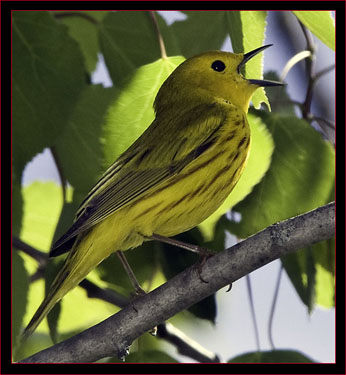
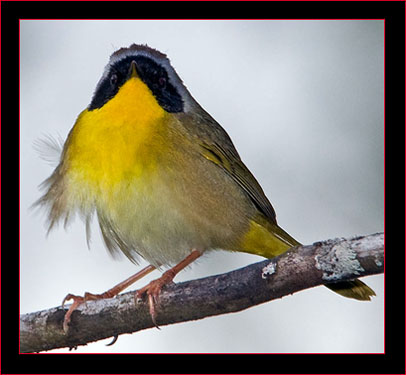
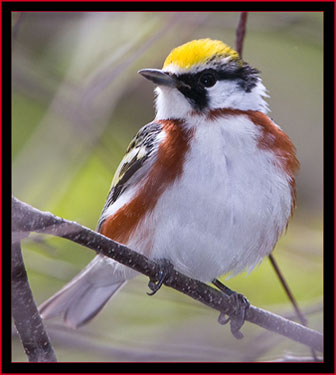
|
A male Ruby-throated Hummingbird viewing his domain...
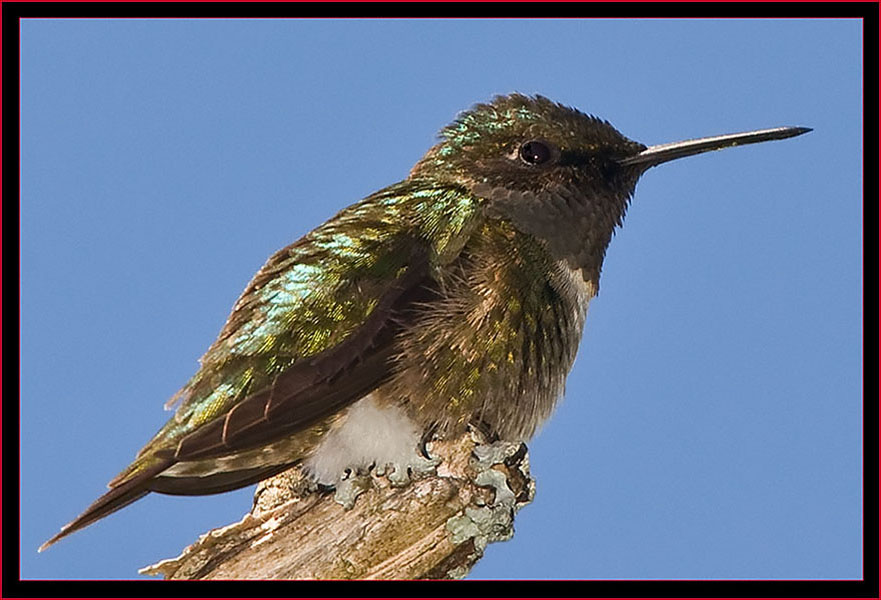
|
The second of the pair of Ruby-throated Hummingbirds I observedOn the way through the woods heading towards the soccer field, a typical spot birders check at Evergreen Cemetery, I came into a small clearing. A Common Yellowthroat caught my eye as the bird frolicked about so I stayed in the area for a time. What I noticed as I observed the trees was a pair of male Ruby-throated Hummingbirds, each at separate branches perched about twelve or fifteen feet apart. They’d sit on their respective perches every now and again flying around doing what hummingbirds do. It was harsh lighting at mid-morning but I decided to take some exposures of the pair. Canon 1Ds Mark III/EF 600mm F/4L lens extended to 840mm, 1/250 second @ f/13, ISO 400 with flash
|
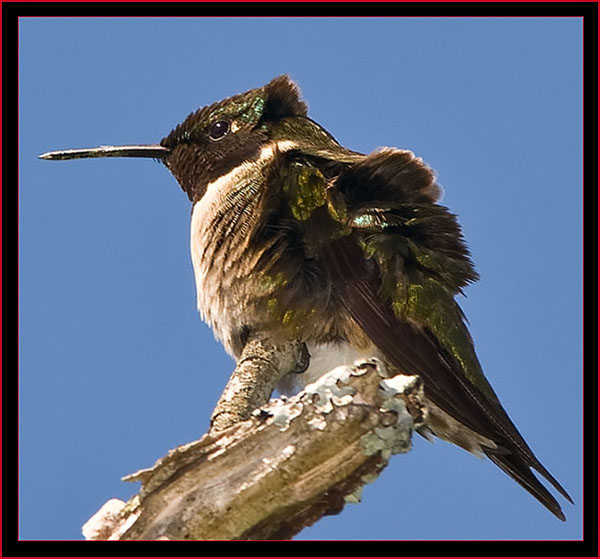
|
Spending time with the Ruby-throated Hummingbirds - you can tell they knew I was watching
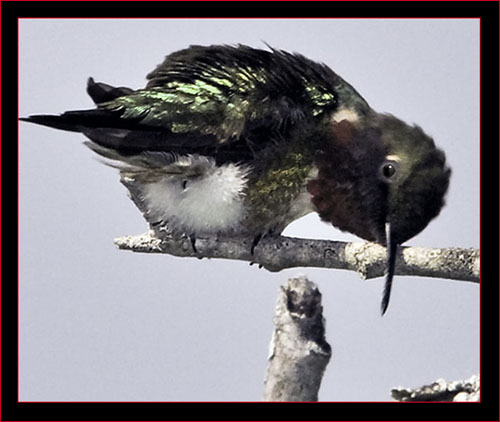
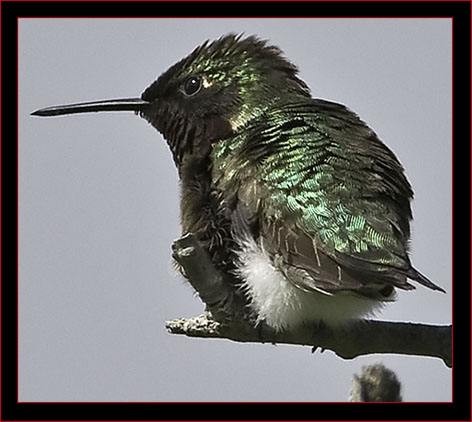
|
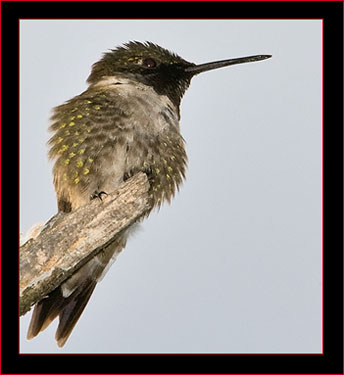
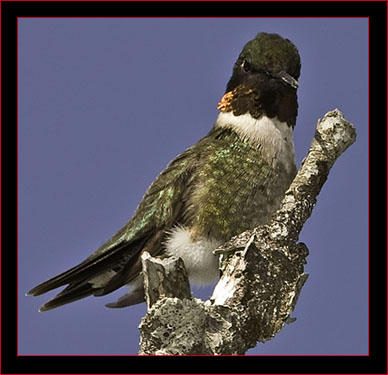
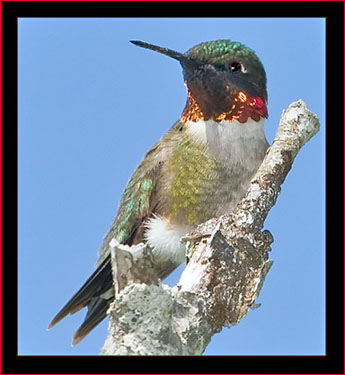
|
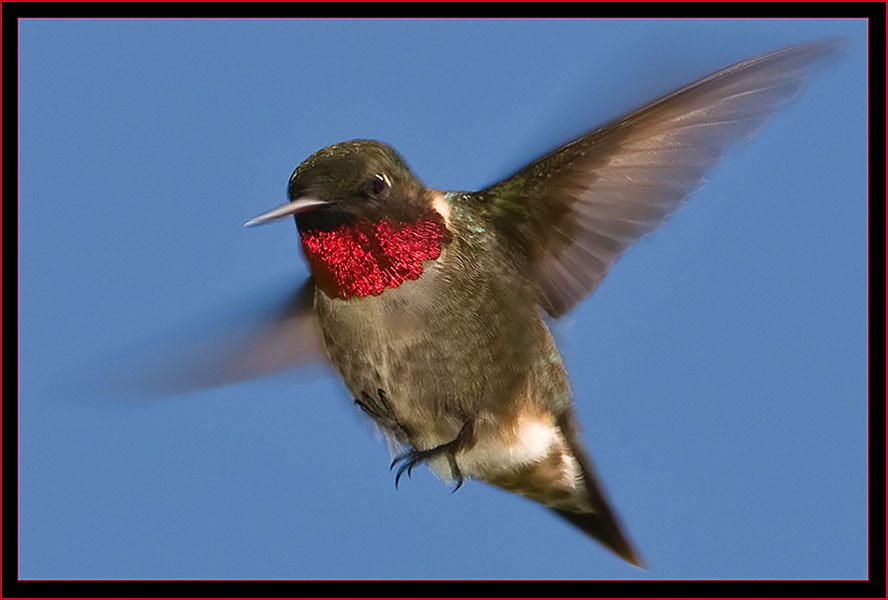
|
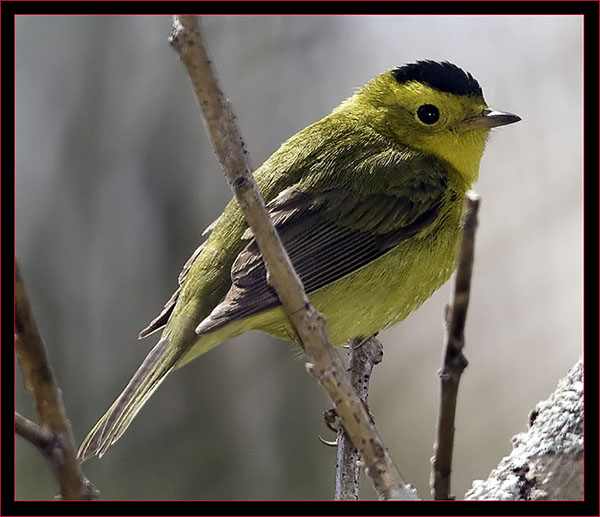
|
Wilson's Warbler view...Canon 1Ds Mark III/EF 600mm F/4L lens extended to 840mm, 1/200 second @ f/10, ISO 400 with flashThere was still quite a bit of activity around the Evergreen Cemetery site but I didn’t photograph much new or out of the ordinary – all typical observations as in recent history and not much unusual. I also noticed that the number of birders in the field wasn’t as prevalent so I gathered in their view things were slowing down. I’d been doing this enough in the past several years to recognize many of my birding compatriots when we pass each other along the trails. Many of these were from Derek’s Saturday morning bird walks, others were interested folks I’d met at various birding spots in our area. Probably most think I’m a bit ‘out of the ordinary’ (I’m being kind here…) because I’m generally seen with a long lens and tripod going down the exact trails & same places they go with this burden. |
A bird I don't often photograph - House Wren - Evergreen CemeteryI was checking around the soccer field and spotted some movement near one of the goals. Once I observed it was a House Wren I walked over to see if I could get a few exposures on this bird. I’m certain there are plenty of the wrens around and I’ve viewed some in our backyard occasionally but I’ve rarely had the opportunity to photograph them. Canon 1Ds Mark III/EF 600mm F/4L lens extended to 840mm, 1/250 second @ f/16, ISO 640 with flash
|
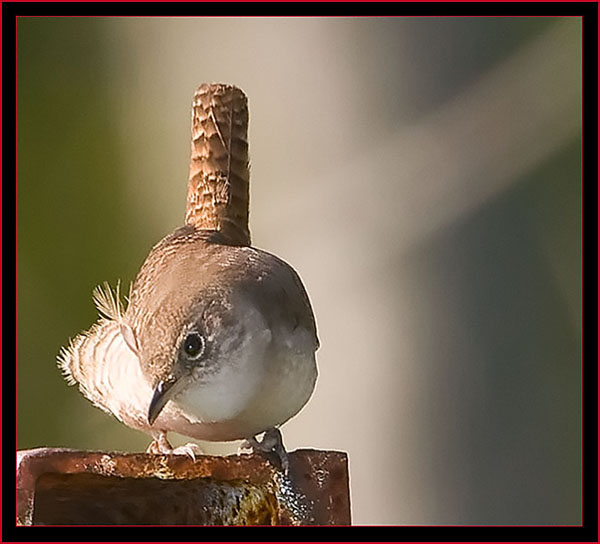
|
Least Flycatcher views...
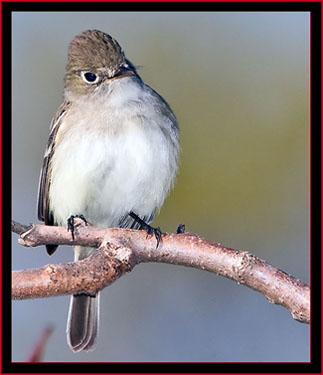
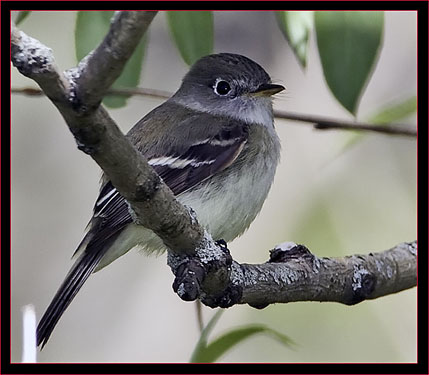
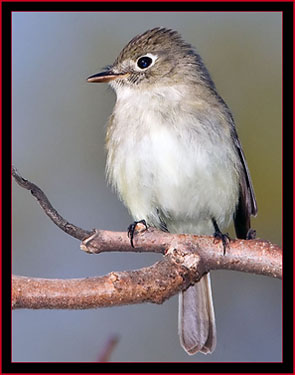
|
American Redstart sequence...
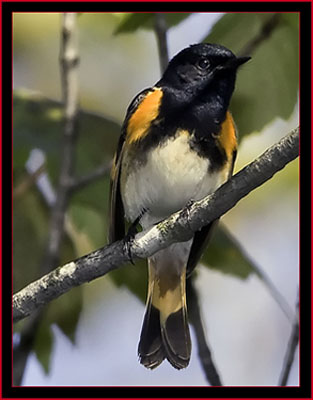
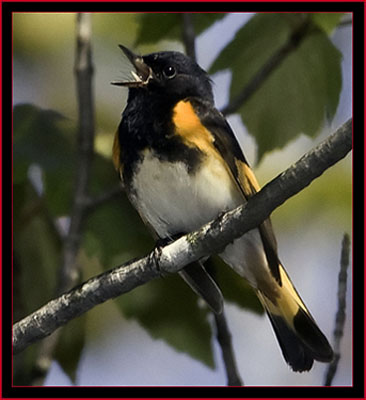
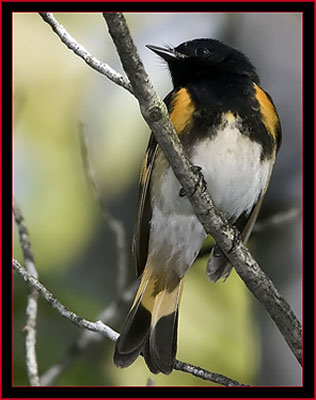
|
Gray Catbird views...
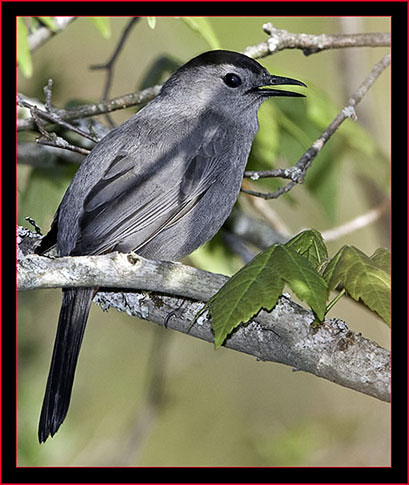
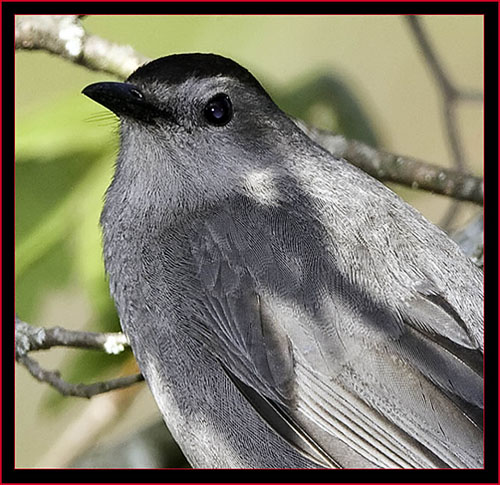
|
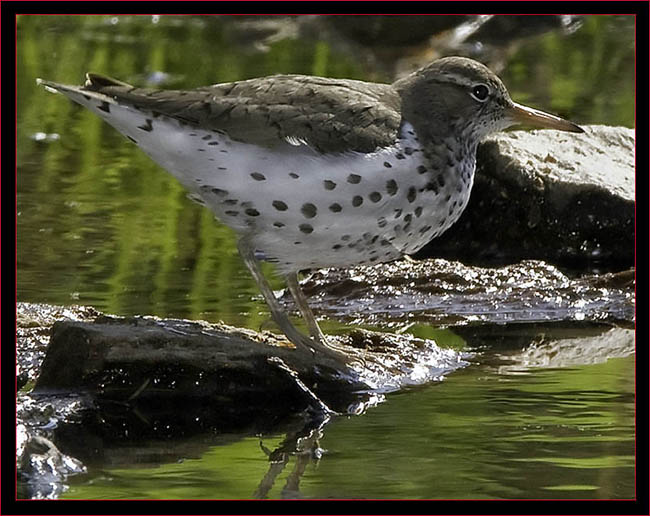
|
A Spotted Sandpiper foraging around a pondCanon 1Ds Mark III/EF 600mm F/4L lens extended to 840mm, 1/250 second @ f/18, ISO 640 with flashThere’s a small population of Solitary Sandpipers that hang around the ponds at Evergreen Cemetery. On occasion another species of shorebird may wander in including this Spotted Sandpiper. They generally stay on a tiny island in the middle of the pond and are easily spooked with all the attention this facility garners this time of year. This photograph was taken shooting towards the small island and you can see the image scale is adequate at this distance at 840 millimeters. I like to get ‘up close and personal’ when I can. When asked about this by folks I tell them if I can get the birds eyeball to fill the viewfinder than I believe I’m close enough… |
A Magnolia Warbler - they appeared to be well respresented this year compared to othersWhen imaging animals, birds or otherwise, critical focus on the eye is an imperative… The subject’s eye (or eyes) is one of the first things a viewer will be drawn to in the photograph and if they aren’t pristine much of the impact of the image will be lost. The eye is always my point of reference for focus when taking a photograph. Keep in mind the subject’s size, lens to subject distance, composition, etc., all exert influence on how you set up the scene. In any event, whether the entire bird or a portion is included in the shot, if the eye isn’t in critical focus you’ll probably toss the shot later at the computer. Regardless of what I’m metering or how the autofocus is set up, I always start with the center focus square on the subject’s eye. Once you’ve acquired a focus lock you can keep the shutter button depressed at the halfway point and recompose the scene for a single shot or use the focus lock button which will allow multiple shots until you release it. Canon 1Ds Mark III/EF 600mm F/4L lens extended to 840mm, 1/160 second @ f/16, ISO 640 with flash
|
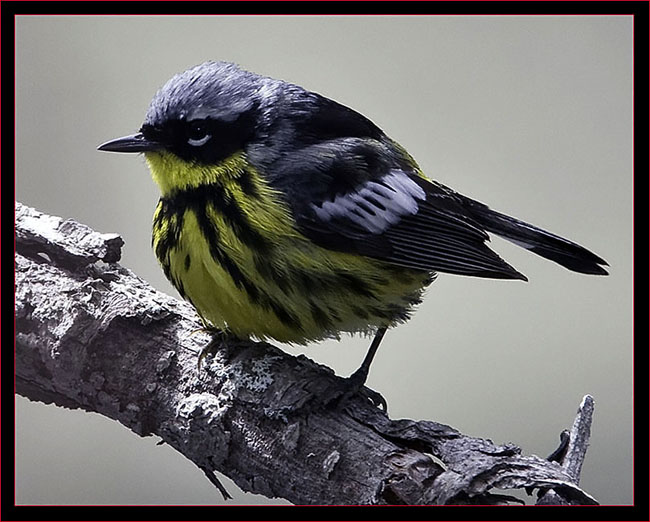
|
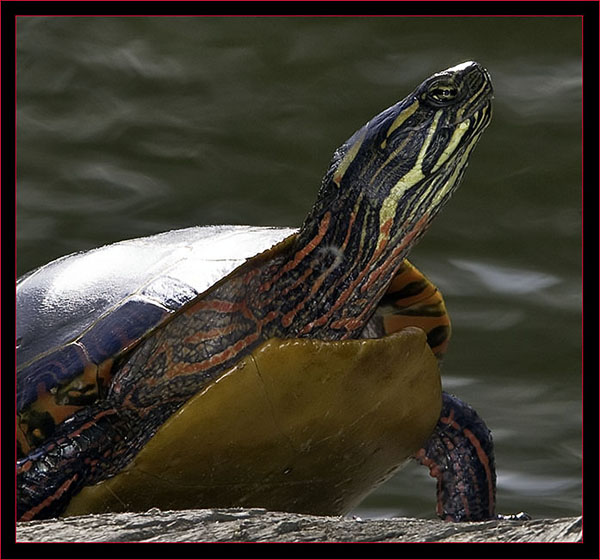
|
One of the many Eastern Painted Turtles sunning on a warm day at Evergeen CemeteryCanon 1Ds Mark III/EF 600mm F/4L lens extended to 840mm, 1/250 second @ f/16, ISO 640 with flashYou’ll notice on this Evergreen Cemetery group many were shot in higher f stops (smaller apertures) from f/10 to f/16. This is because there was more than adequate light at these sessions and I adjusted the f stop predicated on information the camera was providing to keep the entire subject in focus. It’s not unusual to image a bird with the lens wide open at f/5.6 for example to find the head is critically focused (the eye being the focus point) but the tail isn’t due to the subject’s body length being a touch outside of the focus depth of field. I mentioned previously that I always shoot with the histogram ‘right adjusted’ as 40% of the data lives in the fifth zone at the right of histogram – look at your camera’s histogram; you should see that it’s divided by vertical lines that create five zones so you’ll see what I’m referencing. This is adjusted with exposure compensation on the camera and I use this and check it all the time. Take it right by adding more light to the sensor being careful not to overexpose as you’ll ‘blow out’ the highlights which will be indicated visually by image preview on the LCD, by a spike at the right side of the histogram or when viewing the ‘blinkies’ on the LCD image preview if you have this function enabled. It all comes down to obtaining a correct exposure by awareness and understanding of the ‘photographic triangle’ – aperture, shutter speed and ISO. |
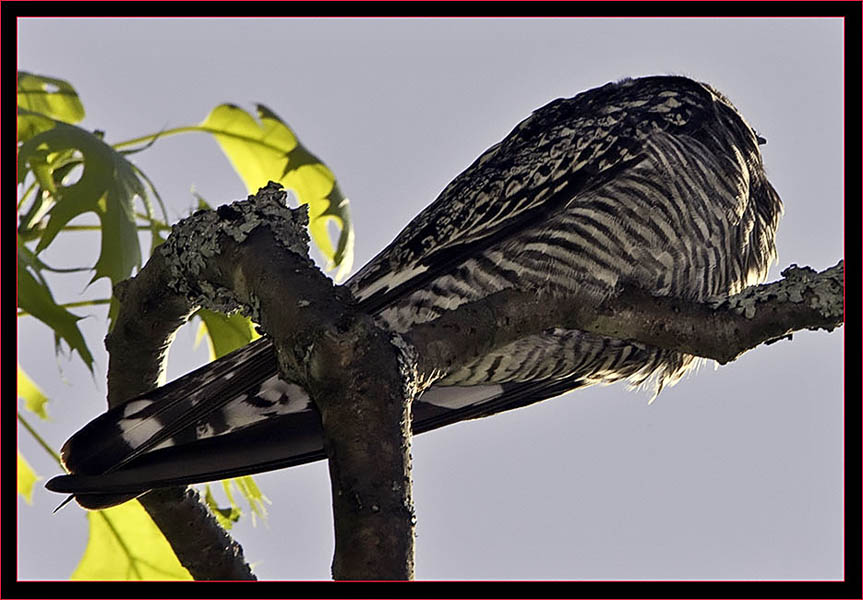
|
A Common Nighthawk - a through the lens first for me and a new bird for the IndexI’m going to close out this section with an unexpected find at Evergreen Cemetery – a Common Nighthawk… These birds may be common but I’ve never seen any around that I can recall and this is definitely the first opportunity I’ve had to photograph one. This sighting generated a great deal of interest to the birders along the trails this day. I first heard about it from a couple of guys and I received details about where it was located from them. I doubt that anyone around didn’t go & take a look before the day was over. I located the bird easily enough but it was a true challenge photographically. The nighthawk was high in a tree and the surrounding area did not allow me to get much further away as there was no clearing on the backside and only a small, open area on the roadway side. I had to get creative as the shot was nearly vertical by the time I obtained a clear view of the subject through the leaves and tree limbs and I still had to get my eye into the 1Ds eyecup to obtain it. I took advantage of as much space as was possible to change the lens/subject angle, set the tripod up, dropped the two rear legs and extended the front leg to maximize the elevation as much as possible. I had to rebalance the system so when I bent down to the camera the lens didn’t overburden the tripod and topple… Once I got set up I commenced a series of exposures and left the tripod in that position over the entire period. Actually, the bird was sleeping most of the time interrupted with some preening activity now and then and was fairly boring overall. However, I was satisfied with the image group when I finally re-set the tripod to a more normal orientation to move on and checked as best I could in the field. One may ask – why didn’t I shoot it handheld as a simpler solution? The answer is straightforward & uncomplicated – image scale - 400mm versus 840; nothing beats my long lens except a longer one… As we say in the telescope world - aperture wins. Canon 1Ds Mark III/EF 600mm F/4L lens extended to 840mm, 1/100 second @ f/16, ISO 400 with flash
|
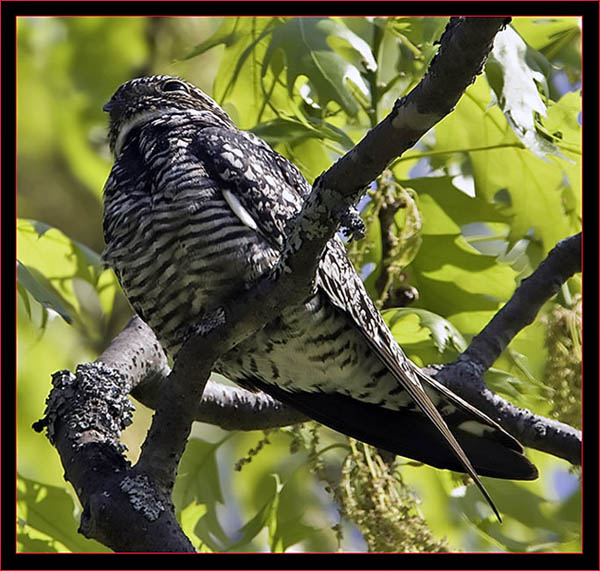
|
More Common Nighthawk views...
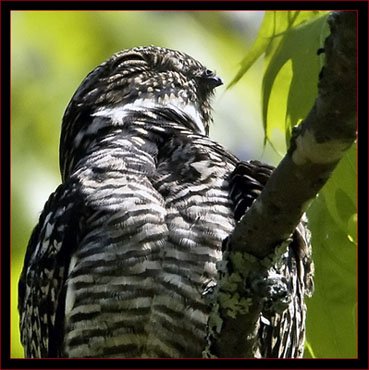
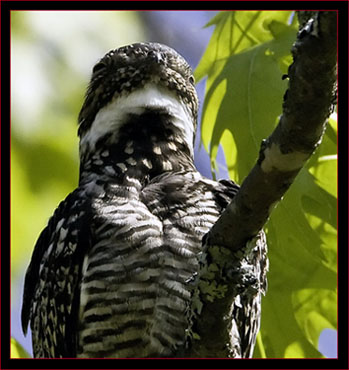
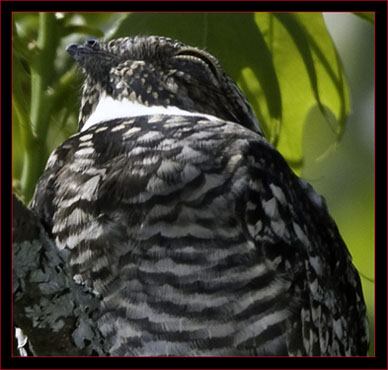
|
Some of my Warbler Shadows from May - birds in motion with flash ghosting...

|
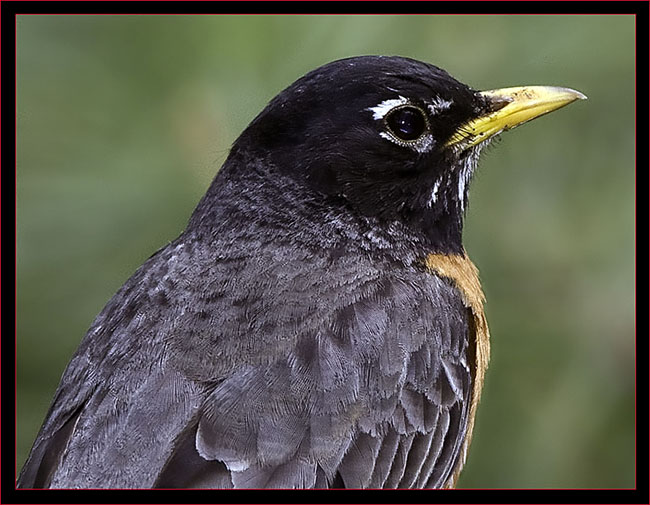
|
This American Robin Concludes the Evergeen Cemetery postingsCanon 1Ds Mark III/EF 600mm F/4L lens extended to 840mm, 1/100 second @ f/10, ISO 400 with flashThis concludes the May portion of my photojournal for summer 2008. I didn’t shoot anywhere near as much for the balance of the summer in comparison. However, after May and then June, when I returned home from Savannah, I was seeking new and different subjects for the times I took the field – mushrooms, flowers, insects and my grandkids - rare visitors to Maine – a real potpourri of varied subjects… Let’s continue on… |
Photography Around the Yard - June 2008
A fly on one of Linda's Heliopsis flowersLinda is an avid gardener – to her this passion is every bit as great as mine for photography and other pursuits I enjoy. Her idea of a great day is one where she can work around the yard without interruption to her heart’s content. I also benefit from this because her intense gardening efforts are wonderful for bringing birds and insects into the yard to serve as photographic subjects. I’m often surprised at what can show up and if Linda observes anything of interest she notifies me to have a look. I would comment that this summer was much less active than last year. This could be due to the unusual amount of rain we received in the spring into summer. I also noticed that we had few butterflies around – last year our bushes were loaded with many beautiful subjects - I found this a disappointment as I wished to show Fitz some of what we have going on here with these creatures. Canon 1Ds Mark III/EF 100mm F/2.8 Macro lens, 1/250 second @ f/5.6, ISO 640 with flash
|
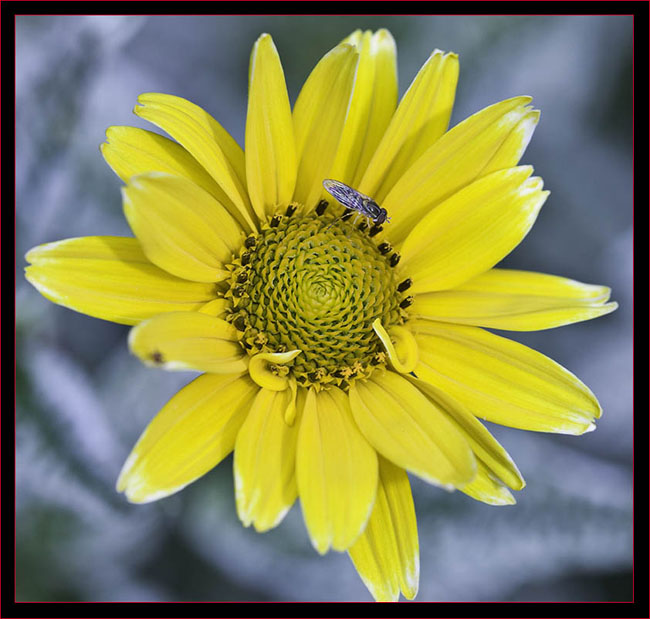
|
Below is a photo template I created with a blow up of the fly at 100% image scale...
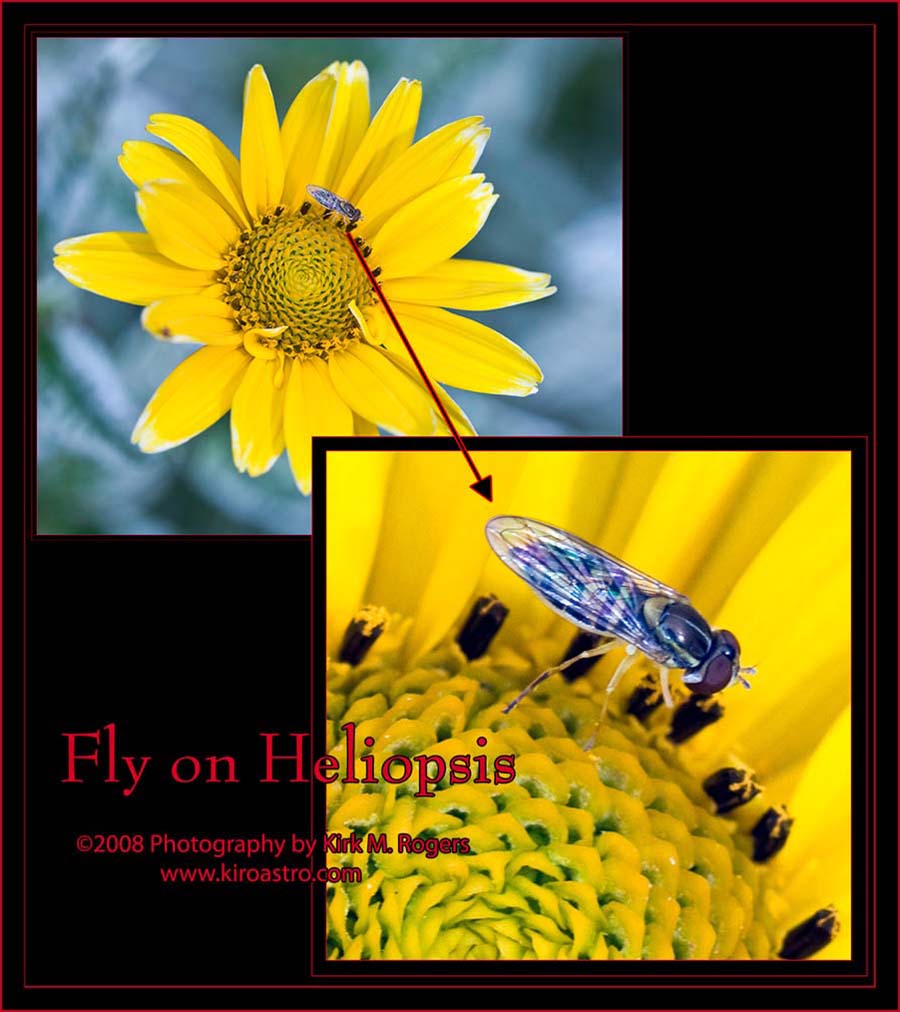
|
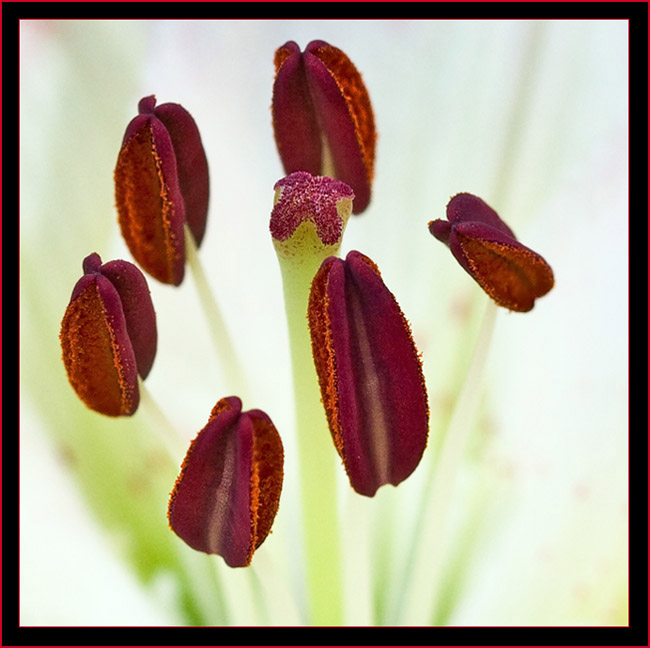
|
Floating stigma, filaments & pistilCanon 1Ds Mark III/EF 100mm F/2.8 Macro lens, 1/320 second @ f/5.6, ISO 640 with flashI took a series of shots on some of Linda’s flowers to learn what kind of detail I may be able to capture. I retained this shot and the following from this backyard group. These weren’t taken using extension tubes, just the camera and lens on a tripod with flash and a cable release. I was attempting to achieve a floating look to the scene… |
Macro image of a flower pistil - a backyard photographCanon 1Ds Mark III/EF 100mm F/2.8 Macro lens, 1/250 second @ f/5.6, ISO 640 with flash
|
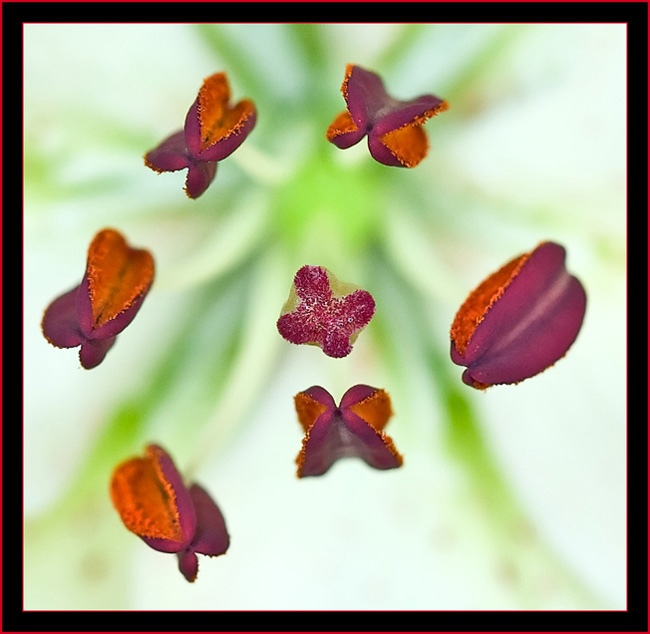
|
Macro view of a Coneflower (Echinacea purpurea) bud & environs from the front yard...
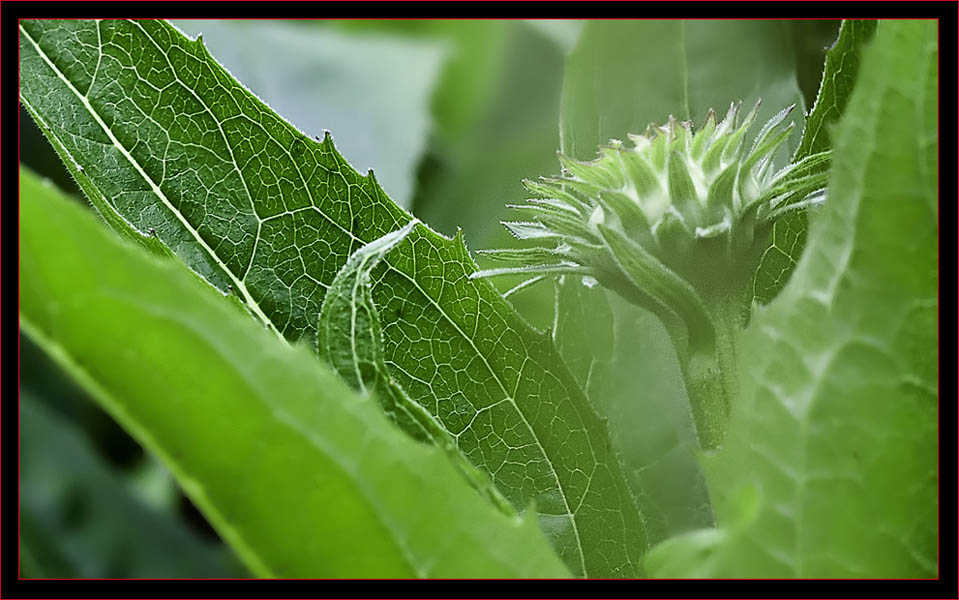
|
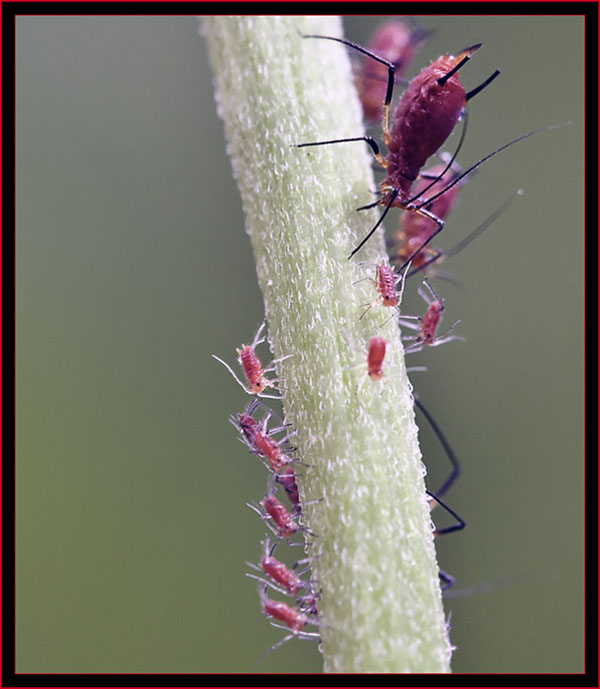
|
Front yard Aphids...Canon 1Ds Mark III/EF 100mm F/2.8 Macro lens, 1/60 second @ f/6.3, ISO 640 with flashOne afternoon while I was making the rounds checking the plantings I came across this Aphid group (aka plant lice) on some of the plants in the front yard. I thought this was really neat and knew right away I’d be setting up for a shot or two… When I mentioned this to Linda she was less than pleased to say the least and looked out front to see what I was talking about. She made it clear that I should do whatever I was going to immediately because she had every intention of alleviating this particular yard issue in short order. |
A different view of the front yard Aphid group - Portland |
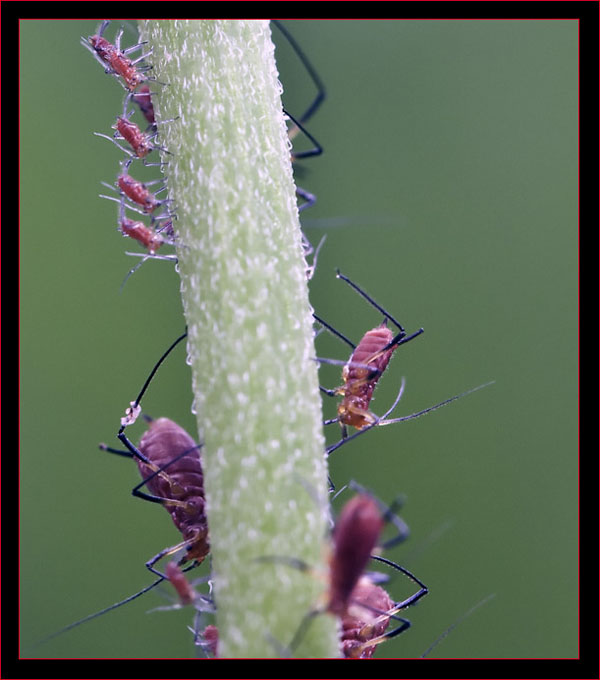
|
This ends the posting from June - the next image group is from July 2008
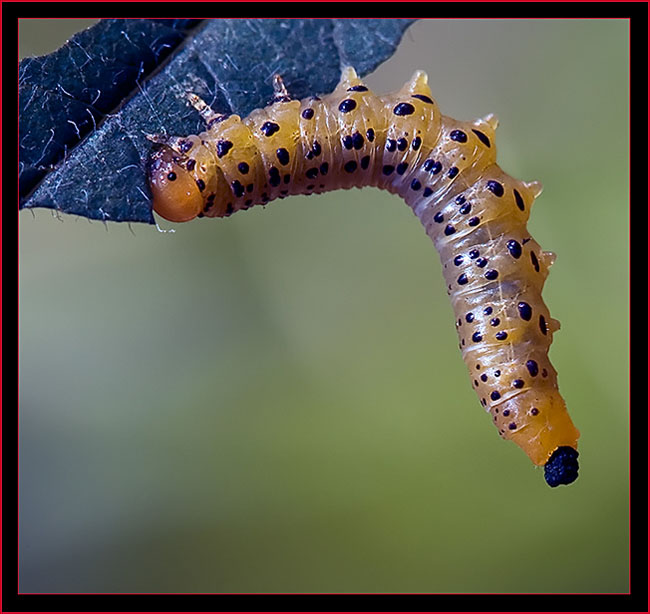
|
Backyard Caterpillar...Canon 1Ds Mark III/EF 100mm F/2.8 Macro lens, 1/80 second @ f/8, ISO 640 with flashLinda pointed these caterpillars out as there were quite a few on one particular tree about as far away in our backyard as you can get. I never did obtain an identification I was satisfied with on this species or what moth or whatever they later become. For this reason I’m not going to offer a species identification although I’m certain they are common to our area. One aspect I thought was ideal for taking these next shots was the fact that the caterpillars were located in the tree around eye level… Now this was a change, no torturous configuration was required to get the lens into position – I was able to stand up for these shots, used an electronic cable release and a flash mounted on a second tripod so I could move it around. |
Backyard Caterpillars...
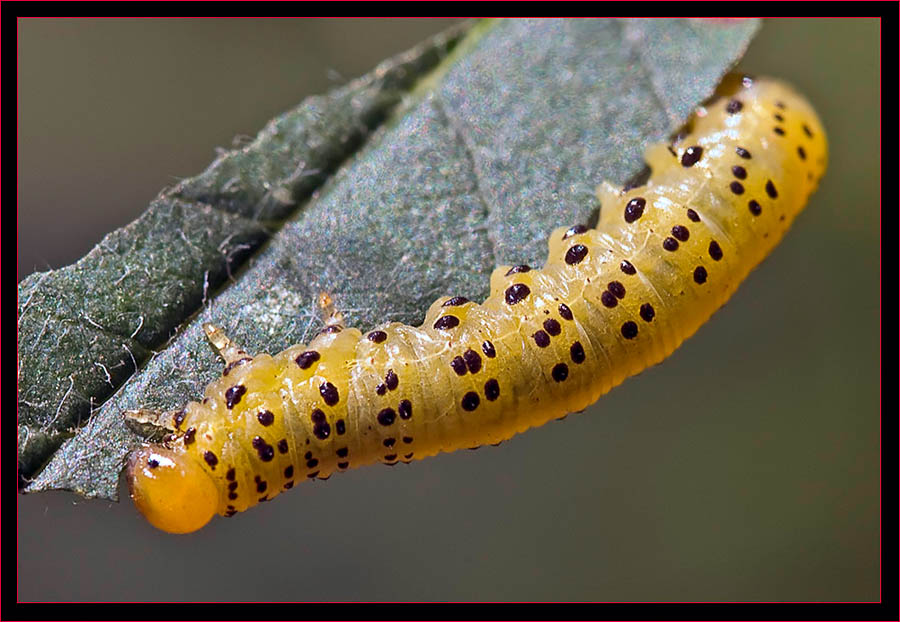
|
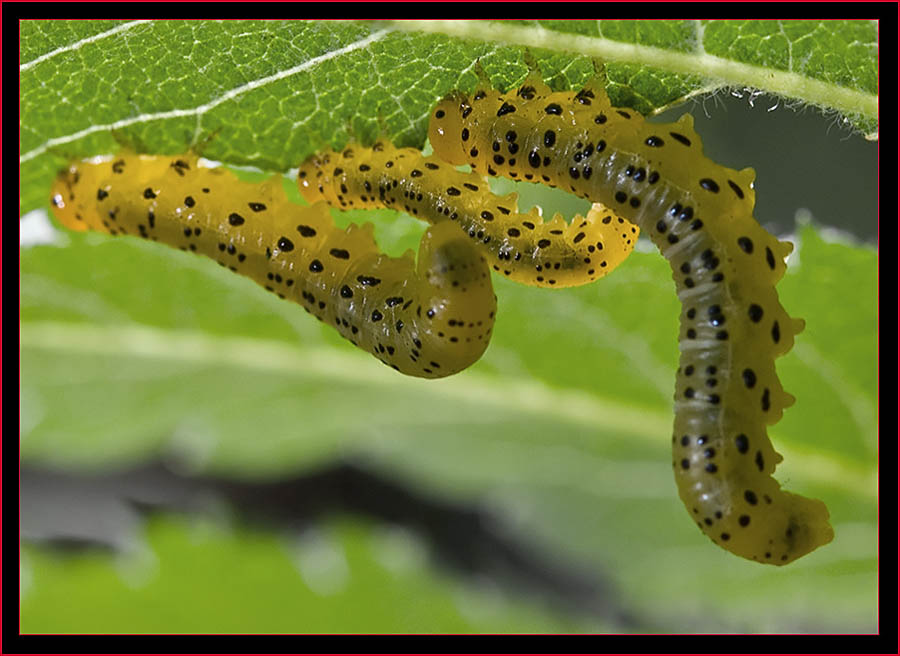
|
Backyard flower close up - PortlandCanon 1Ds Mark III/EF 70~200 IS zoom lens @ 115mm, 1/5 second @ f/32, ISO 100 with 37mm of extension tubes & flash
|
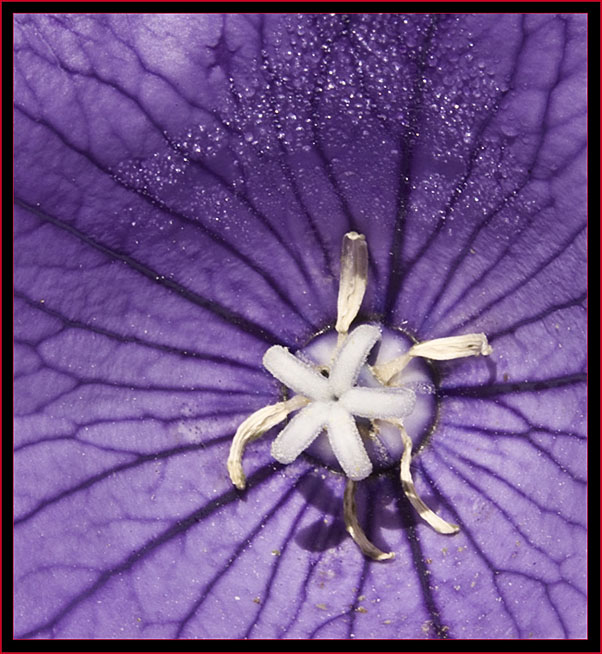
|
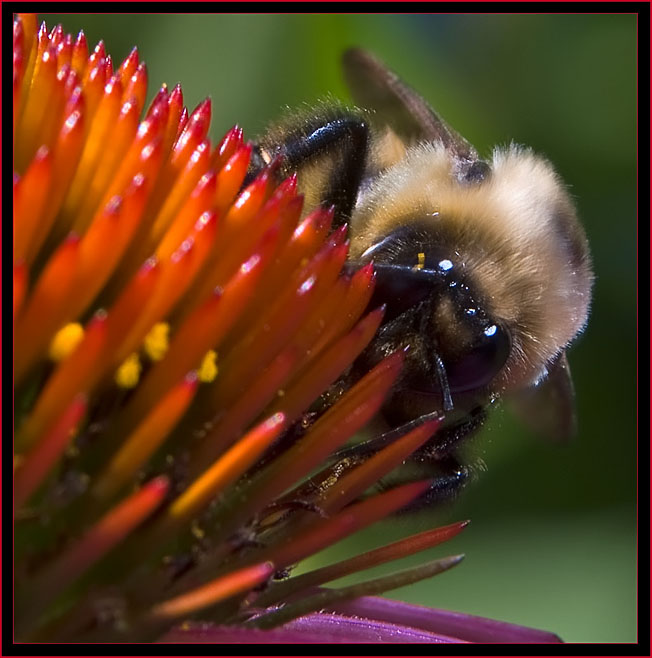
|
Bumblebee on Coneflower...Canon 1Ds Mark III/EF 70~200 IS zoom lens @ 120mm, 1/15 second @ f/16, ISO 100 with 37mm of extension tubes & flashAs I was set up to photograph the Coneflowers a few bees were busy doing their thing around the flowers. I was shooting at a slow shutter speed but when this bee entered my shoot zone I took a few shots. The depth of field wasn’t enough to get an entire bumblebee in focus without working on the lens to subject orientation and at this shutter speed there was no hope of stopping any movement. Remember the front yard Coneflower bud I posted earlier? This is the same plant but now it was in all its glory. I hope you enjoy the following images… |
Coneflower view - Canon 1Ds Mark III/EF 70~200 IS zoom lens @ 120mm, 1/20 second @ f/16, ISO 100; 37mm of extension tubes
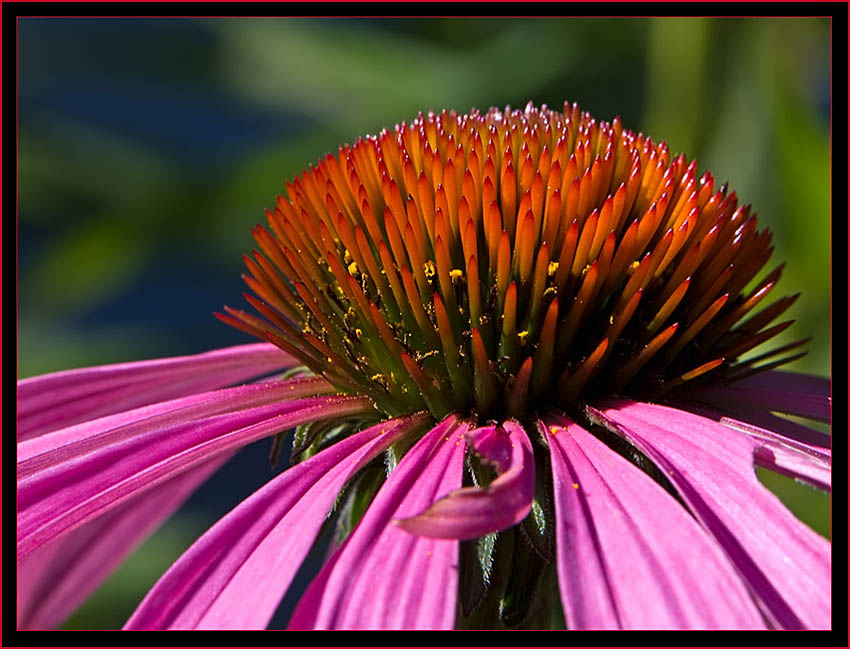
|
Coneflower up close - Canon 1Ds Mark III/EF 70~200 IS zoom lens @ 90mm, 1/4 second @ f/32, ISO 100; 37mm of extension tubes
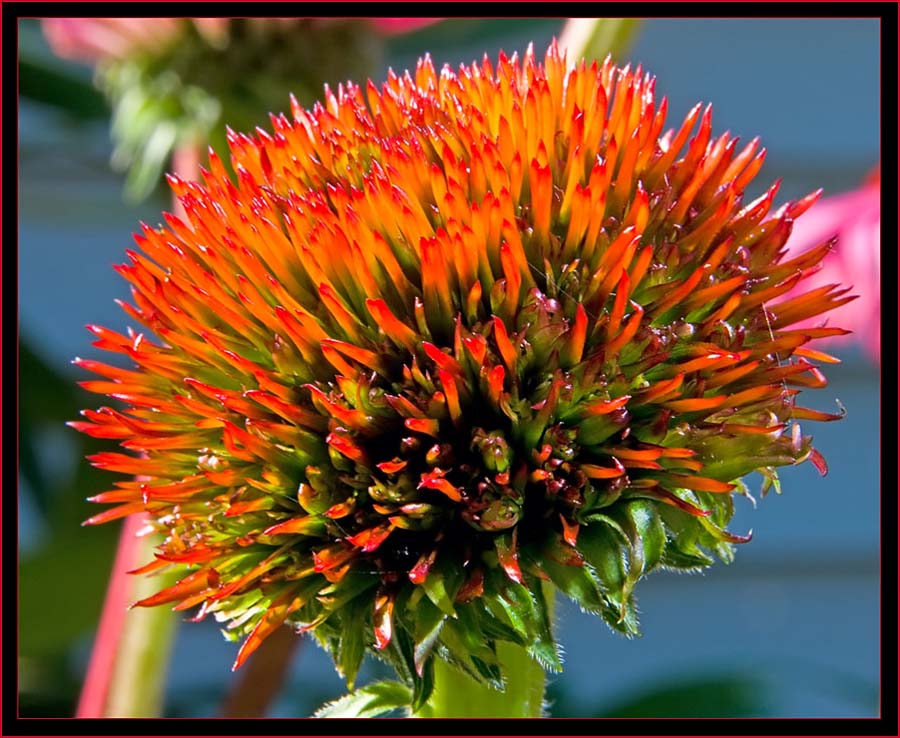
|
This Hornworm group jumps ahead to mid-August…
Tobacco Hornworm - PortlandThe Tobacco Hornworm (Manduca sexta) is the larval stage of the Carolina Sphinx Moth. Tobacco and Tomato Hornworms, a close relation, are common, large caterpillars that defoliate tomato plants among others. Their
large size, up to +/- 90 millimeters (three inches or more), allows them to strip a plant of foliage in a short period of time. Linda found a pair of these on her tomato plants and was somewaht appalled as she told me the news… She
allowed me time to take some exposures - I can’t say for certain what happened to either specimen afterwards…
I was hoping she’d let them hang around until they became moths but there was little chance this was going to happen.
Canon 5d/EF 70~200 IS zoom lens @ 160mm, 1/400 second @ f/8, ISO 400 with 37mm of extension tubes with flash
|
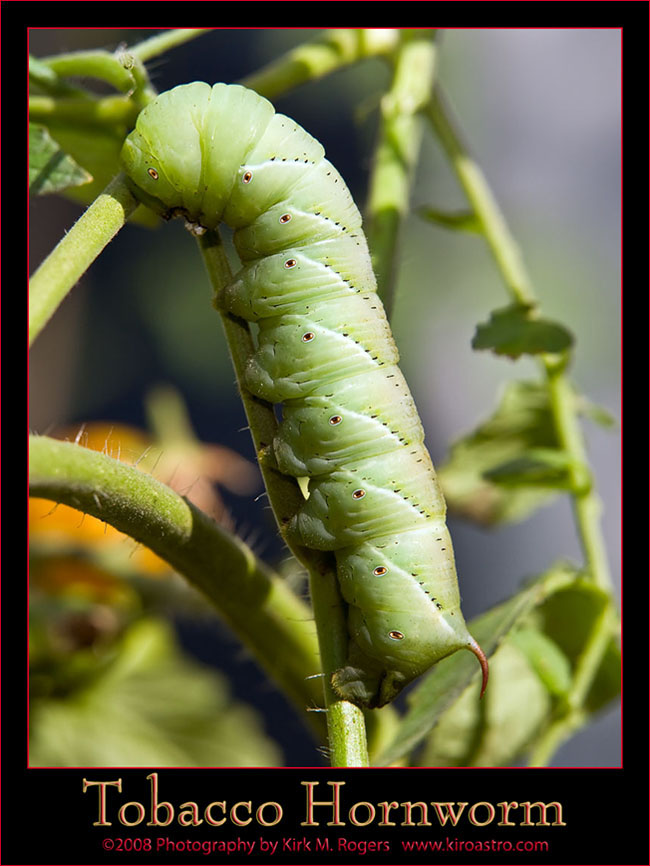
|
The chomper end of this caterpiller - Canon 5d/EF 70~200 IS zoom lens @ 160mm, 1/320 second @ f/8, ISO 400; 37mm of extension tubes with flash
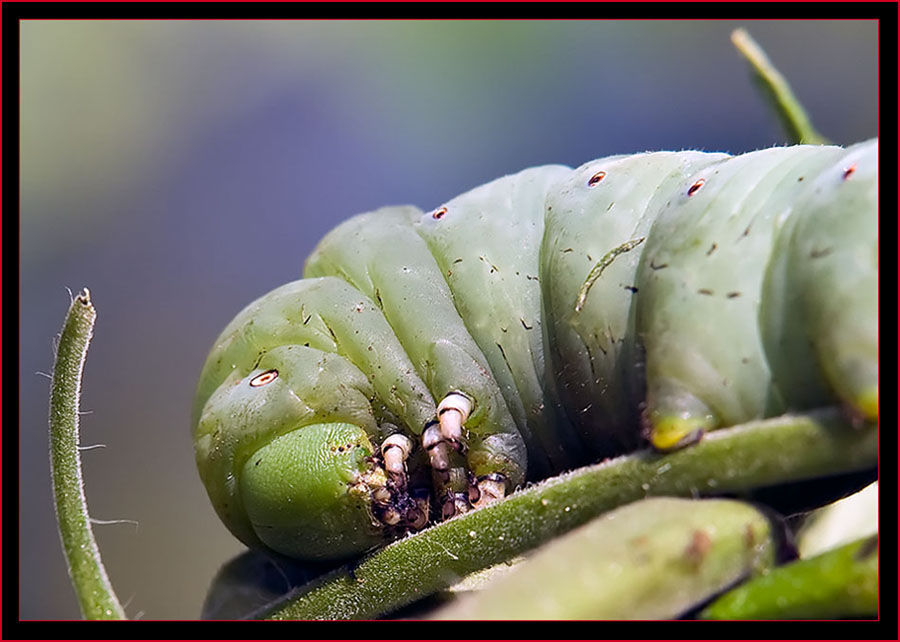
|
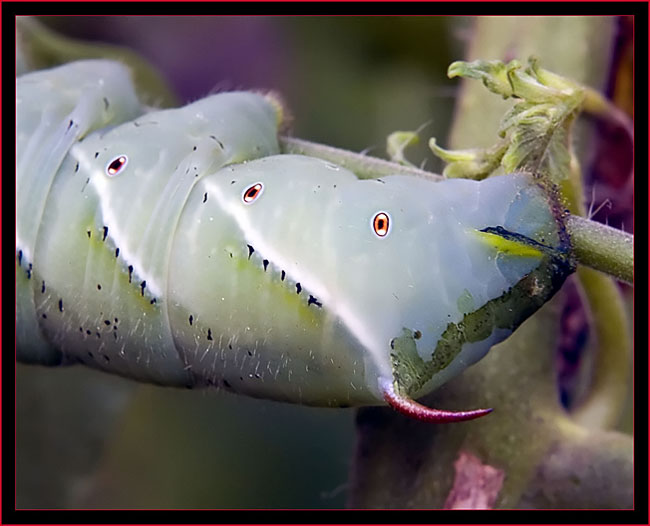
|
Horn view of the Tobacco Hornworm - this is actually located dorsally on the terminal abdominal segment...Canon 40d/EF 70~200 IS zoom lens @ 175mm, 1/10 second @ f/11, ISO 640 with 37mm of extension tubes & flashDuring this period I’d taken a quick business trip to Virginia to inspect a property we own in Smithfield, which had experienced a fire. I was traveling by air and packing fairly light but I did bring a camera bag along with the 1Ds and a few lenses just in case. I really didn’t think I’d have much time but in the end result did have one afternoon free and decided to use it for some photography. I was in a park I had frequented while working in the area a few years back. I broke the gear out, attached the lens and turned the camera on. Attempting to get a few ranging shots I looked in the viewfinder to find – well, nothing… Nothing I could do would get the camera to work and I received the dreaded ‘error 99’ message - the equivalent to the 'blue screen of death' when having computer issues... My friend asked later what exactly this meant. What I told him was it meant the camera was going back to the Canon repair center and this is exactly what happened. So I went through a period of multiple weeks in August without it. It was during this period I photographed the hornworm and used the 5d & 40d for this session. An observation – did you note the caption for this image, so aptly stated with near scientific nomenclature? Well before coming under the expert tutelage of Fitz Clarke - 'the Bug Man of Skidaway Island', I simply would have indicated this is the caterpillar’s rear end... Our mutual friend Doug Herrick, also a Skidaway island resident, would have as well but he'd probably deny it since I pointed it out. |
5d close up view of the business end... It’s easy to imagine this caterpillar stripping a plant in no time flat |
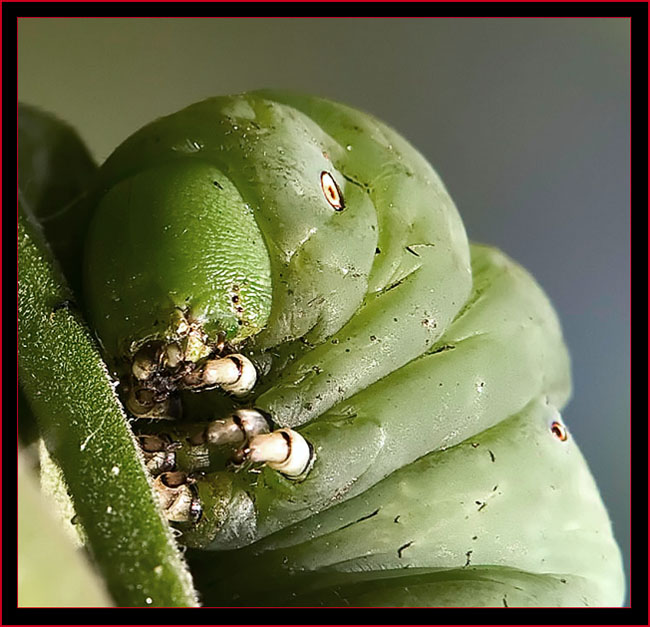
|
One last Tobacco Hornworm view - Canon 40d/EF 70~200 IS zoom lens @ 160mm, 1/8 second at f/11
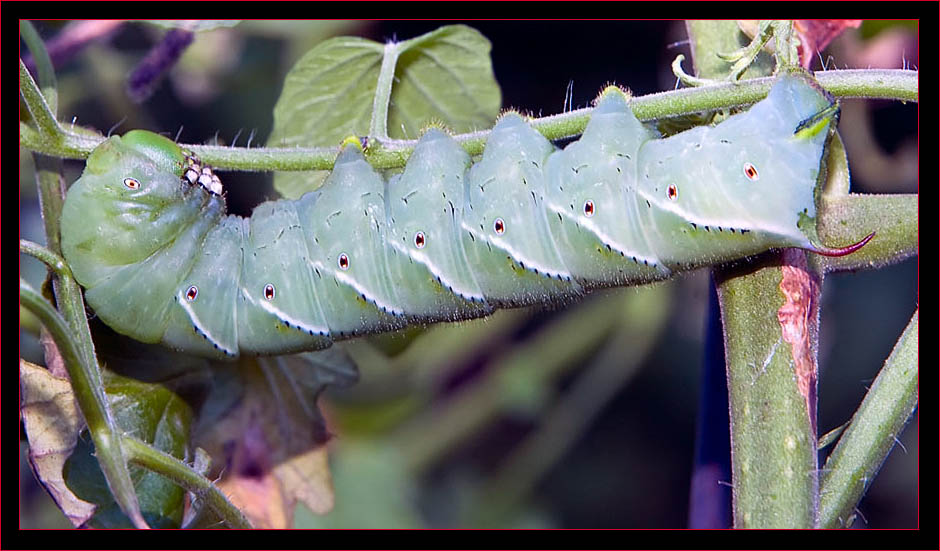
|
A Pelagic Birding Trip - July 12, 2008
Please feel free to visit A Morning at Sea Aboard the Vessel Odyssey to take in the scope and breadth of this day as it was a good deal of fun with some great imaging opportunities.

|
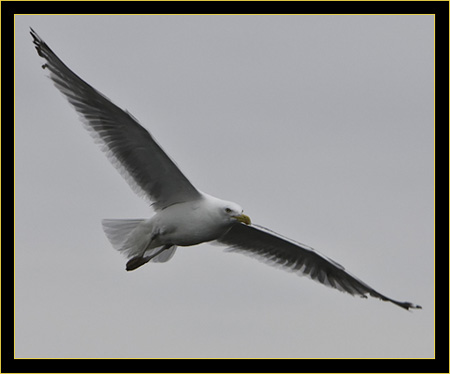
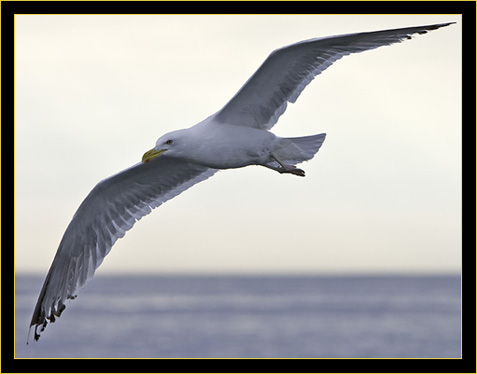
|
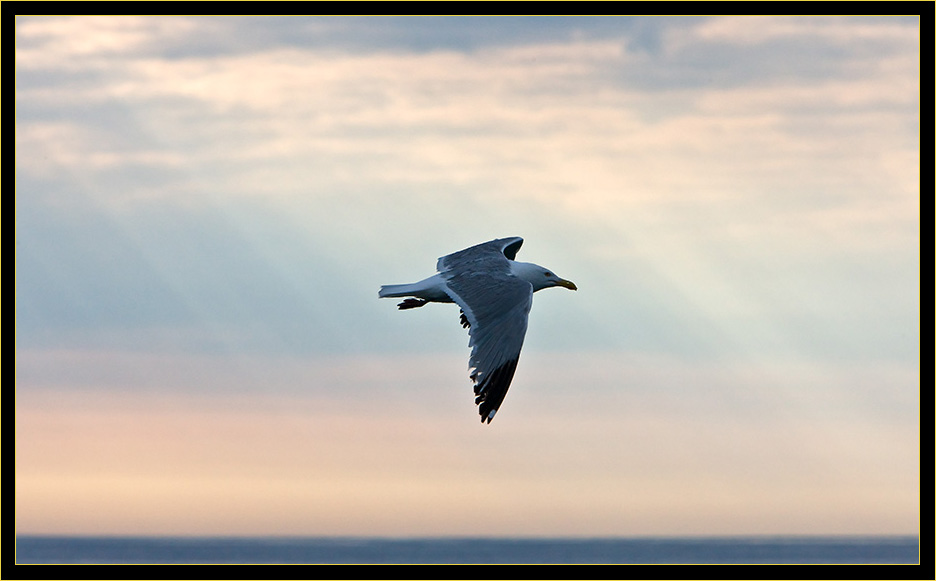
|
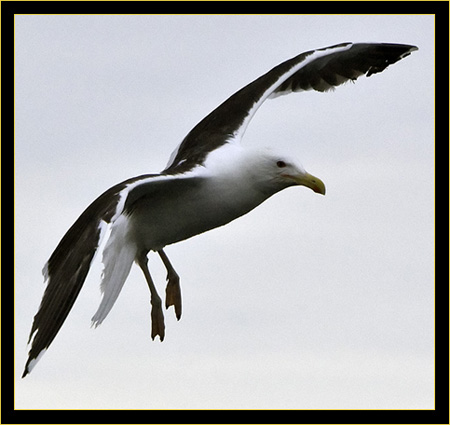
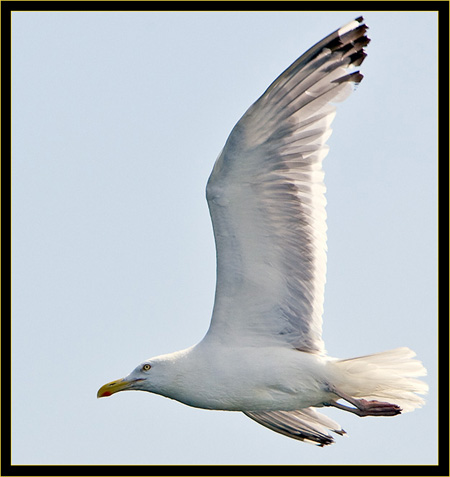
|
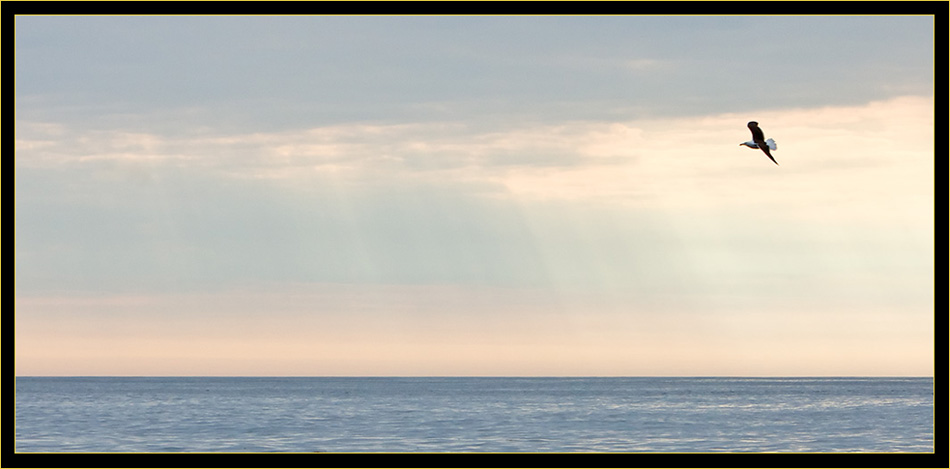
|
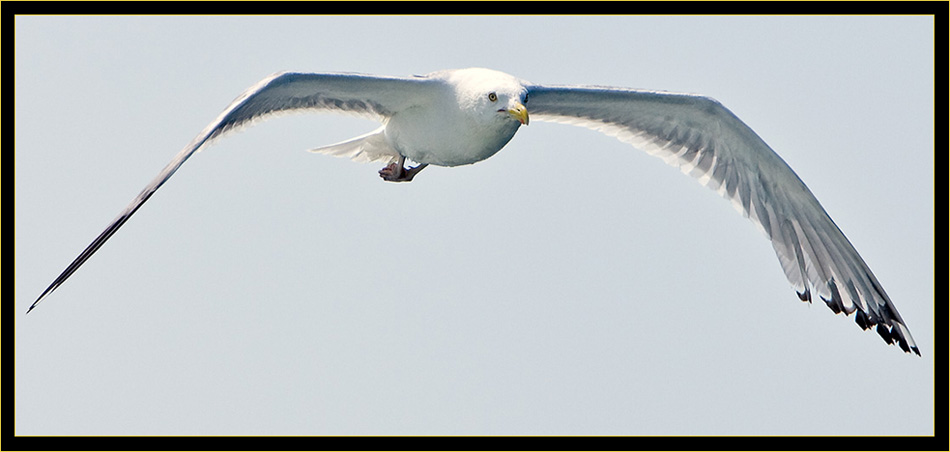
|
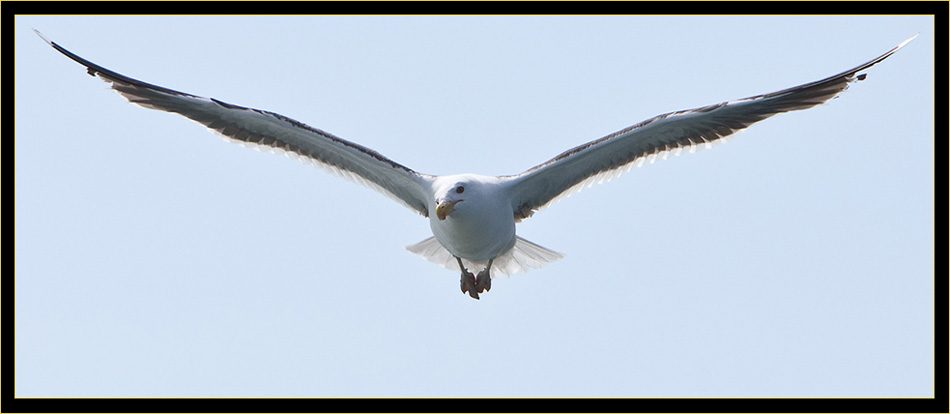
|
Finbacks - Close Encounter
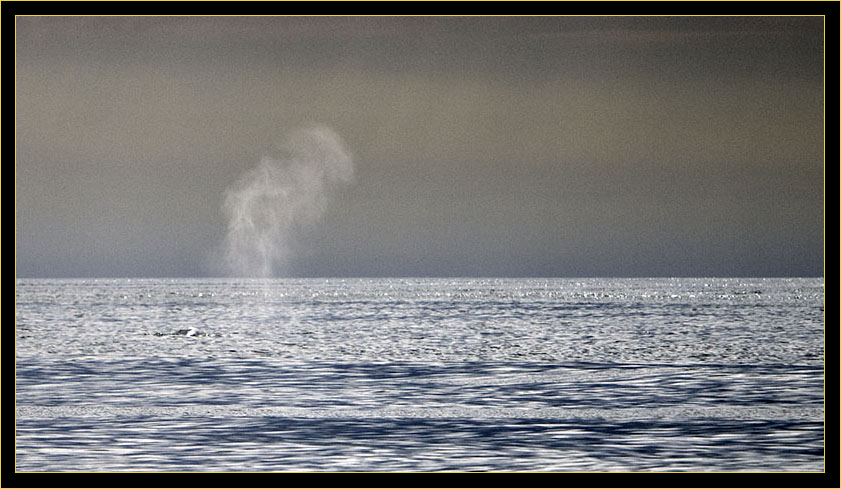
|
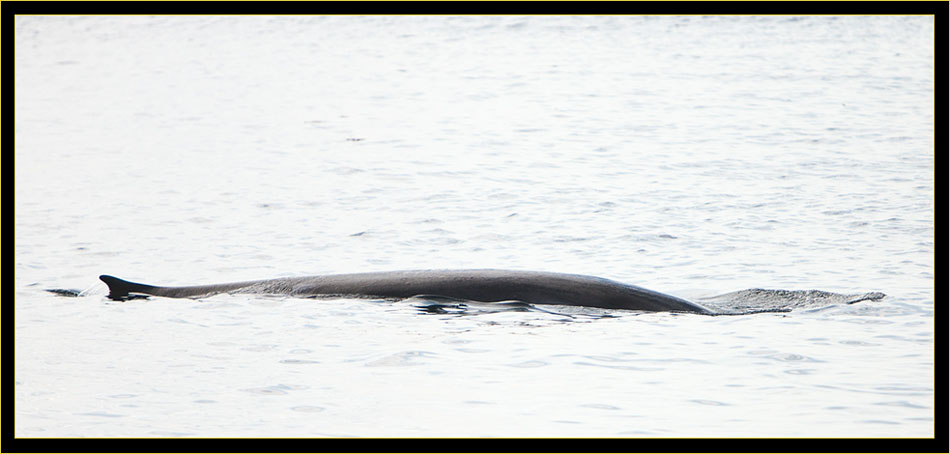
|
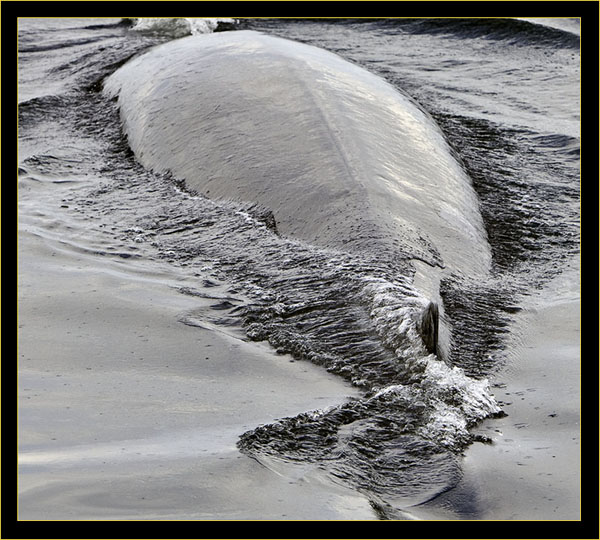
|
Finback Whales (Balaenoptera physalus), also called the Fin Whale or Razorback, is a marine mammal belonging to the suborder of baleen whales. They grow to a length of 70 to 80 feet or more depending on what source you’re referencing.
They are second in size only to the majestic Blue Whale (these can reach one hundred feet in length) making the Finback the next largest living creature on our planet. Finbacks are also noted as the world’s fastest whale and can
obtain speeds of up to 35 miles per hour. They have eight to nine hundred baleen plates which they employ in feeding on fish and krill eating two to three tons of daily.
It has been said that whales are the heart of the sea – I can see why and am in absolute agreement... Finback Whale - Canon EOS 1Ds Mark III, 1/640 second exposure at f/6.3, ISO 640, 140mm focal length |
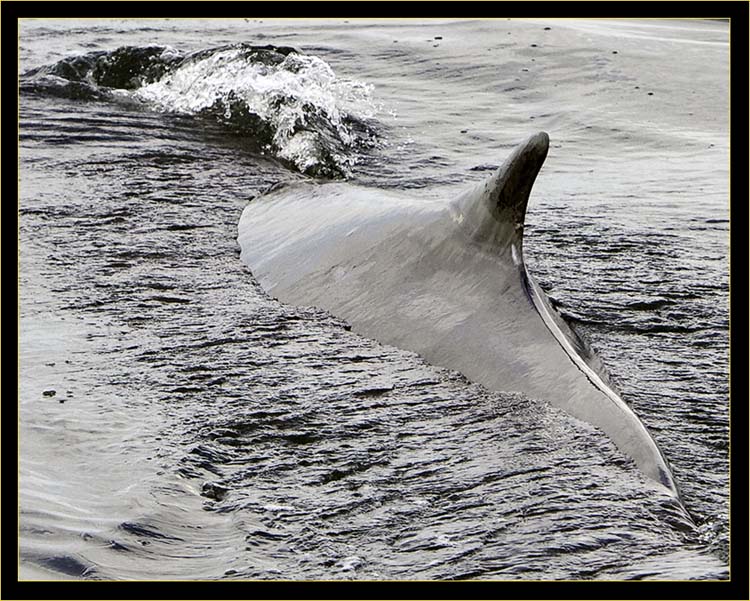
|
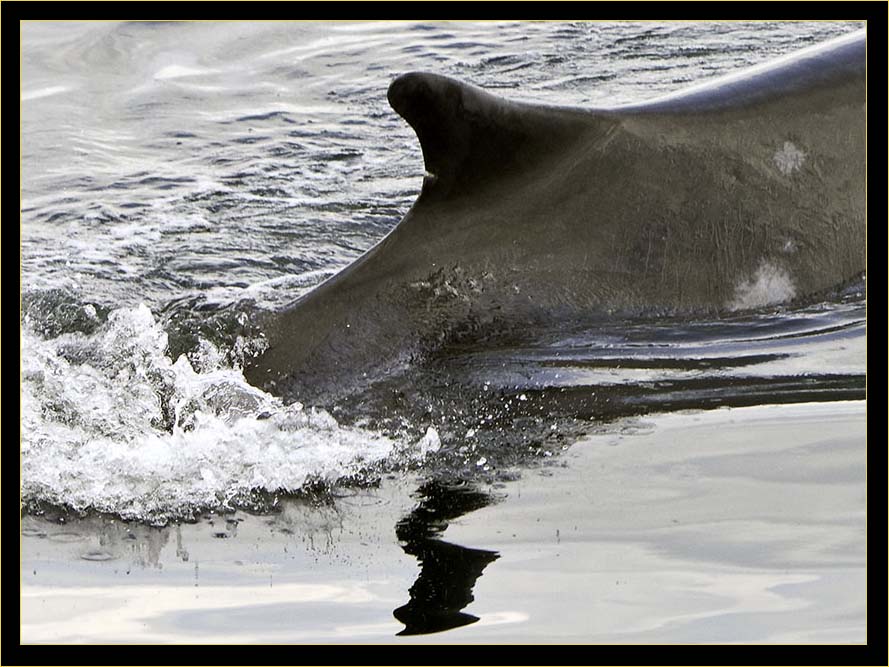
|
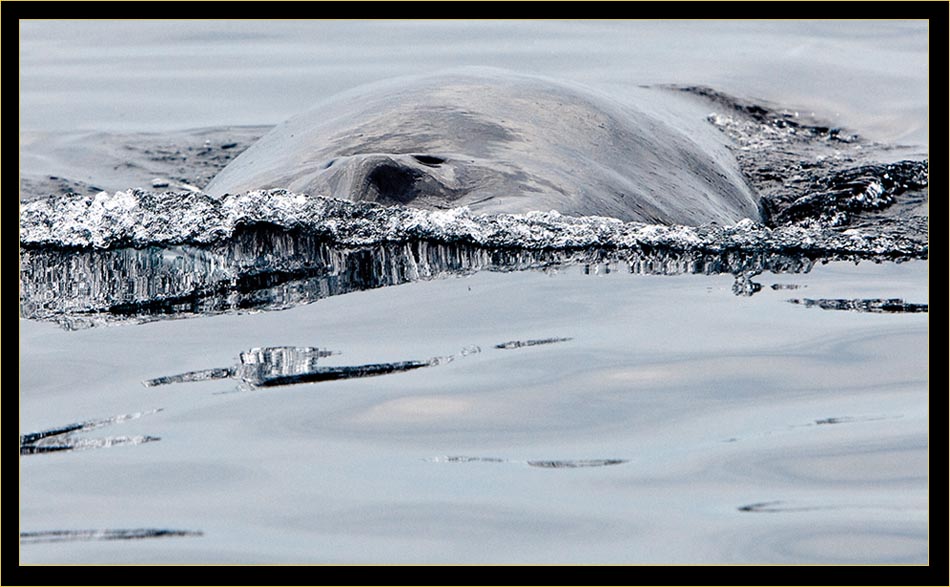
|
Basking Shark - Another Surprising Visitor
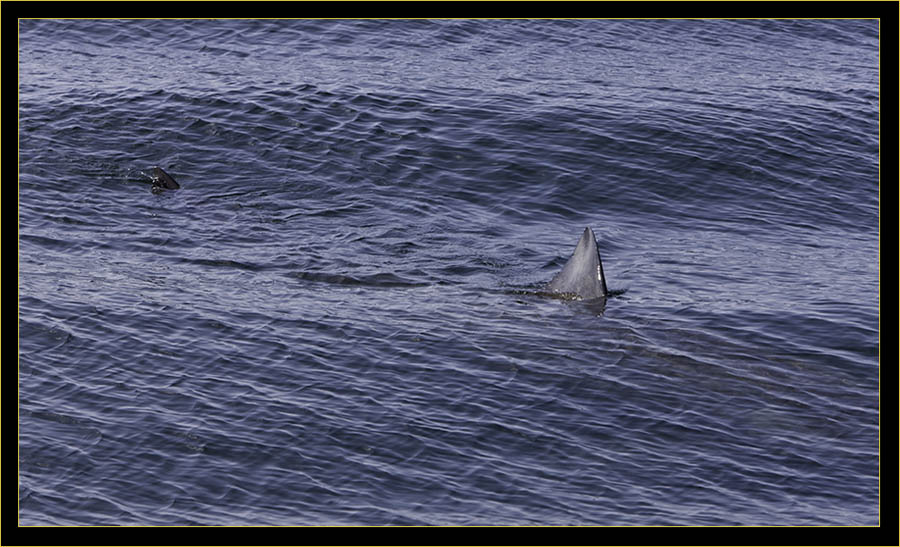
|
|
The Basking Shark (Cetorhinus maximus) is the second largest fish in our seas, the only larger being the Whale Shark, and is one of the most recognizable. Needless to say, this was an unexpected sighting and as Derek pointed out a few days later far more rare than we realized at the time. This shark and the finbacks alone were worth the ‘price of admission’ this day… This large creature can grow up to thirty or forty feet (again source dependent), is a filter-feeder with grayish brown to black coloration on the upper surface and off-white or darker on its belly. Its huge mouth is used to collect food that floats in the water. A sluggish swimmer with a gill structure that nearly encircles the circumference of the animal, this shark has a liver that can account for up to 25% of its body weight. The liver is high in squalene, a low-density hydrocarbon that helps give the shark near-neutral buoyancy. We viewed a Remora hanging around the shark that is visible in the image at right at the base of the dorsal fin. I was on the upper deck when we came alongside this shark and in a excellent position to shoot down into the water. |
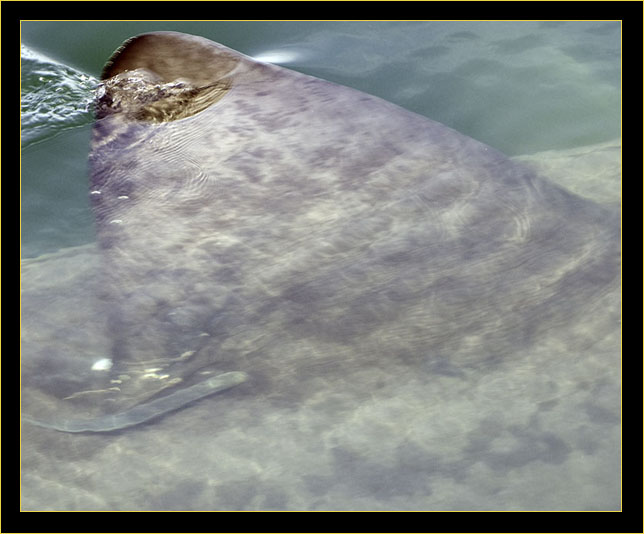
|
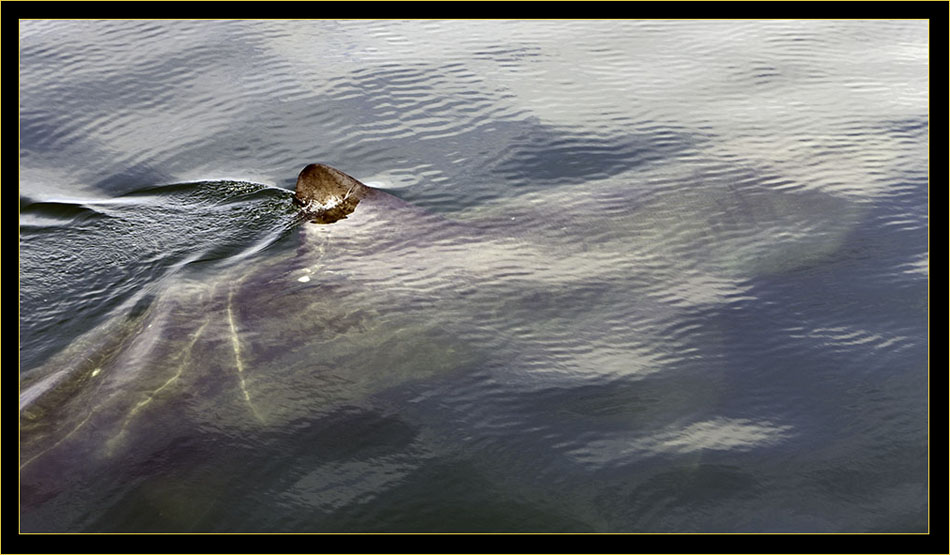
|
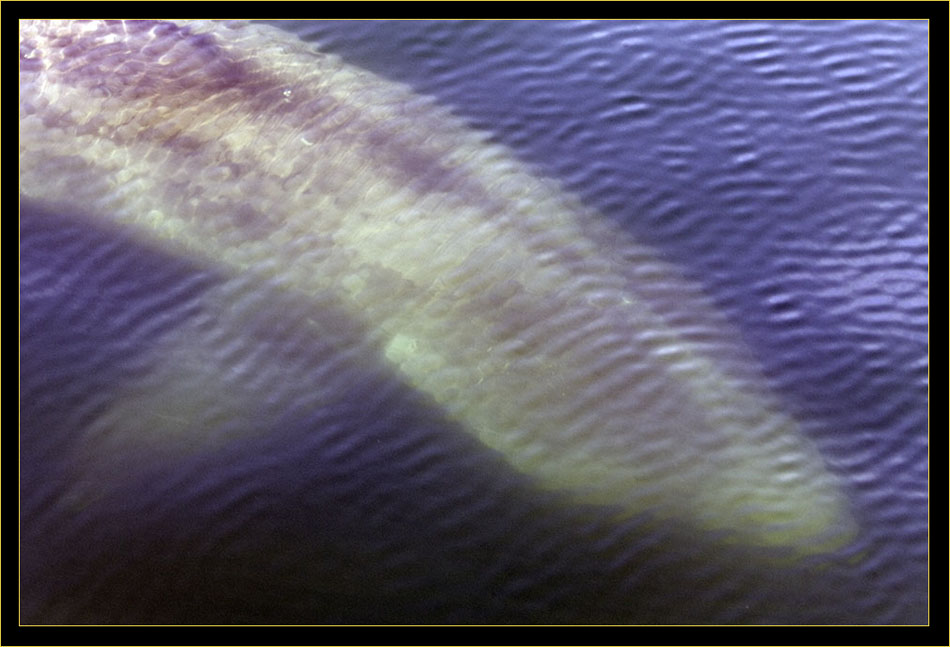
|
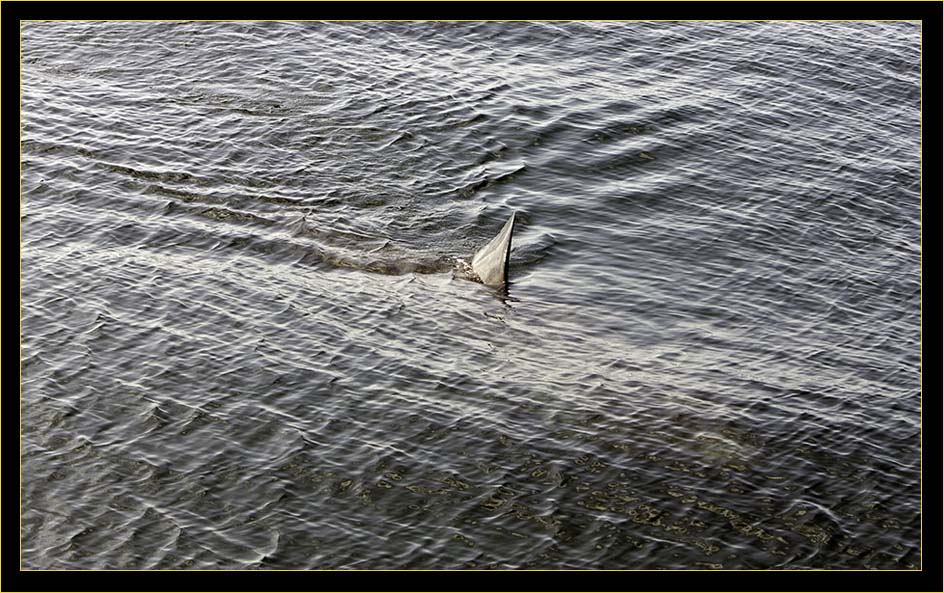
|
Some Miscellaneous Maine Images... July & August 2008
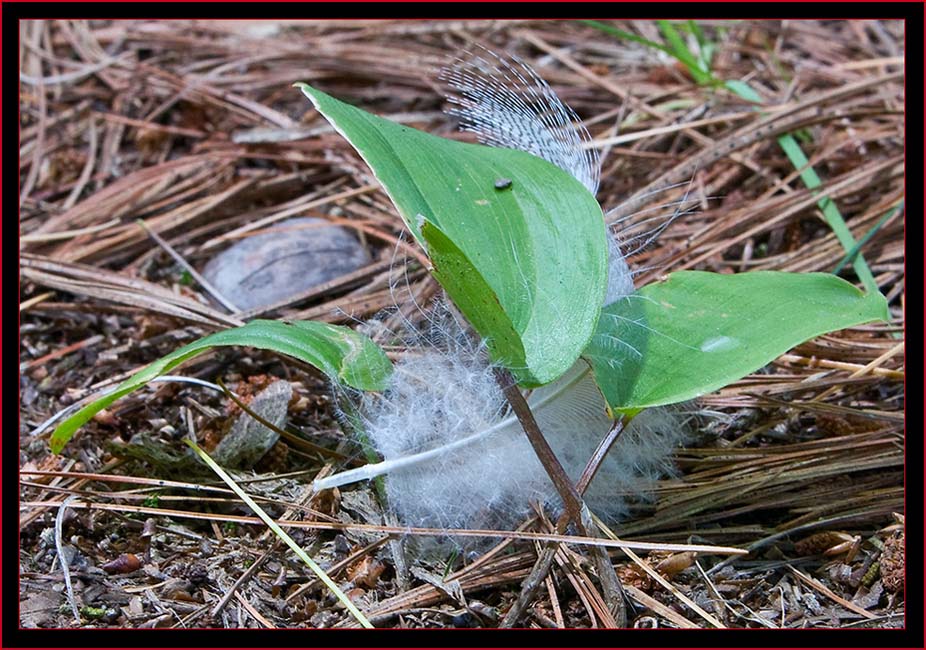
|
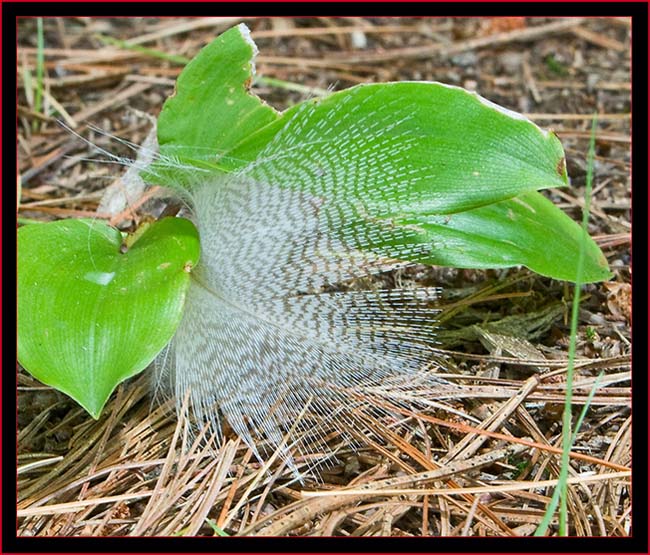
|
Captive feather - Bonney Eagle Lake - BuxtonLinda and I joined the family one day over the Fourth of July weekend at her folk’s camp in Buxton. Of course I had the cameras along and besides checking out the local bird activity looked around to see what else may be around. One view that caught my eye was this feather... I photographed it as it lay and will present two views of it here. Canon 1Ds Mark III/EF 70~200 IS zoom lens @ 80mm, 1/20 second @ f/16, ISO 640; 37mm of extension tubes & flash |
Common Loon with Rudder Extended... - Bonney Eagle Lake - Buxton
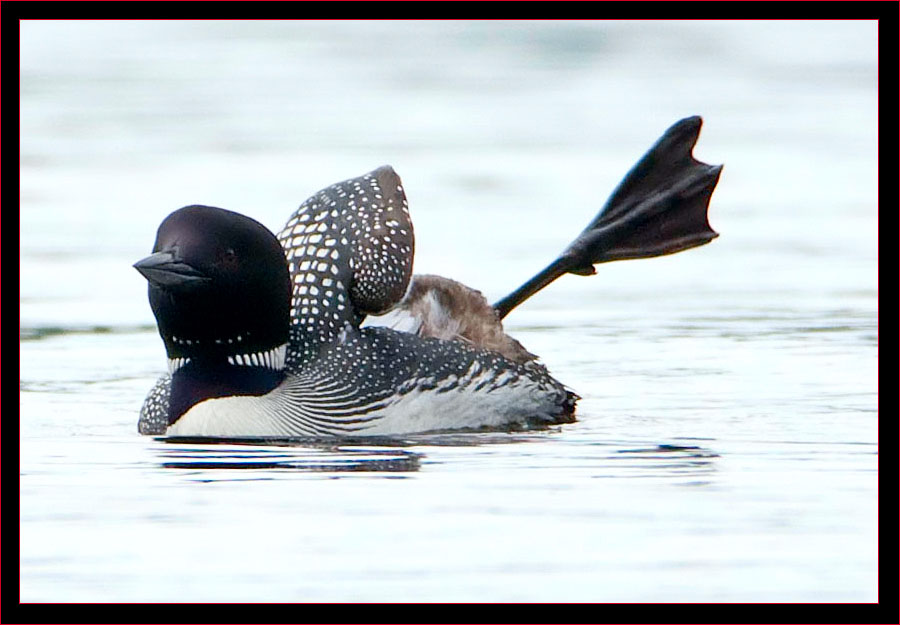
|
Female Ruby-throated Hummingbird - Canon 1Ds Mark III/EF 600mm F/4L lens extended to 840mm, 1/500 second @ f/8, ISO 640 with flash
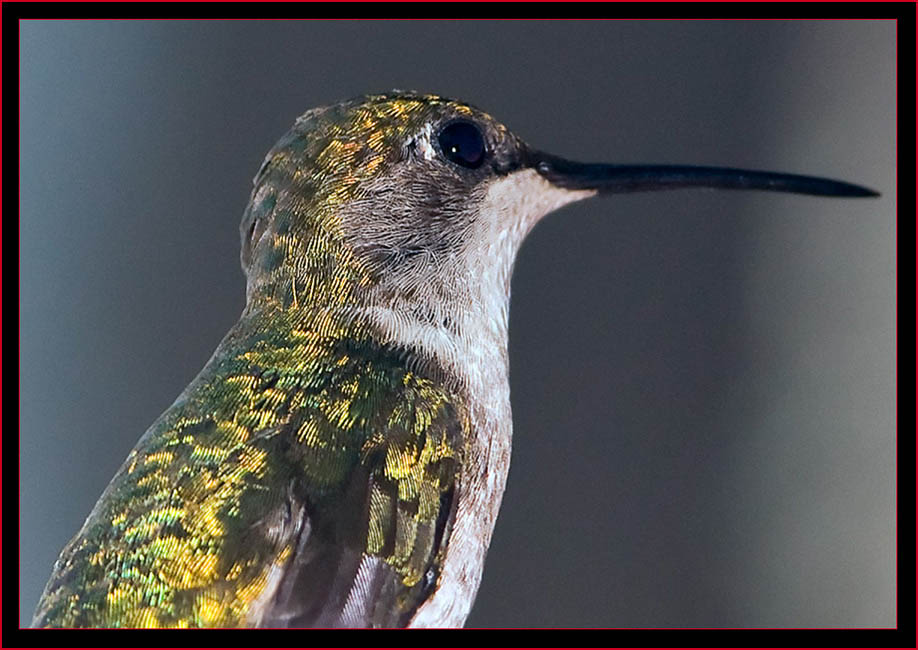
|
|
This image from Buxton isn’t particularly special but I was surprised to see this Eastern Bluebird... According to range maps these birds they should be everywhere in our state. However, I rarely view them when in the field and this was my first observation in recent history in Maine. Canon 1Ds Mark III/EF 600mm F/4L lens extended to 840mm, 1/1600 second @ f/8, ISO 640 with flash
|
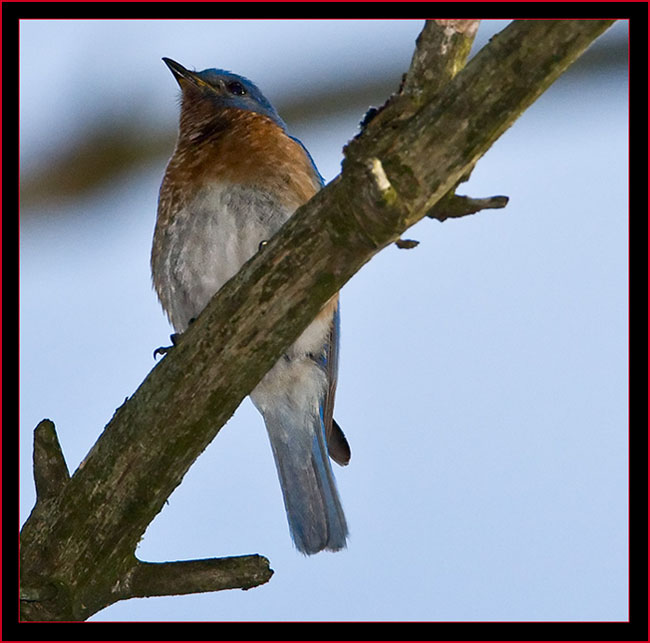
|
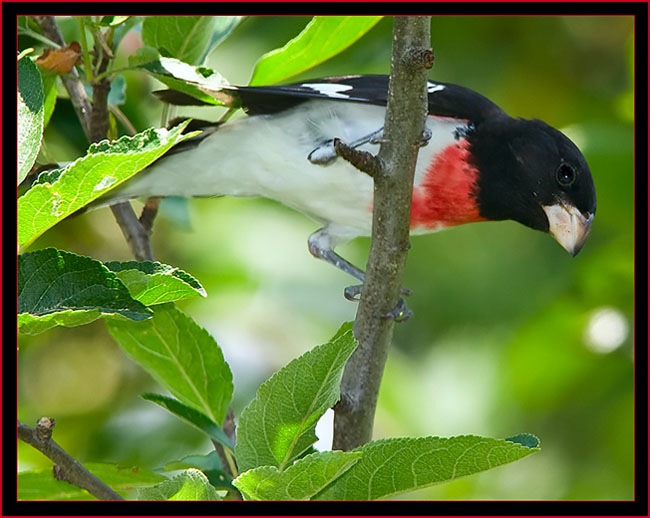
|
Rose-breasted Grosbeak - 4th of July weekend - YarmouthThe following two bird images were taken at a friend’s yard in Yarmouth. Linda and I drove over one morning to photograph a family of Pileated Woodpeckers. The young birds had been extremely vocal of late and our friends figured we could come away with some good shots of the fledglings with the 600mm lens. This didn’t work out though – looks like we arrived one day late as there was no activity around the tree these woodpeckers made home. |
|
We enjoyed a fun get together and getting the camera out is always a good thing although not finding the woodpeckers was disappointing. Canon 1Ds Mark III/EF 600mm F/4L lens extended to 840mm, 1/1600 second @ f/8, ISO 640 with flash
|
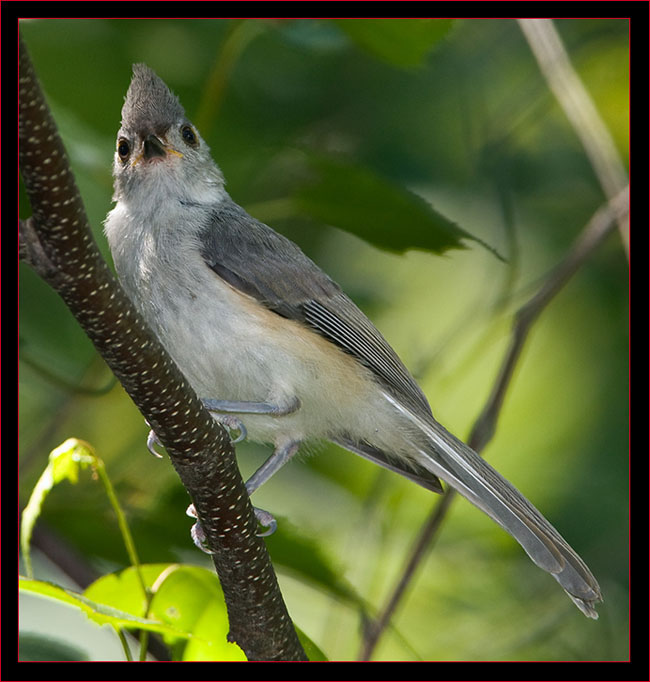
|
Something a bit different - August 2008
Mast & Spars in foreground – Schooner Amistad
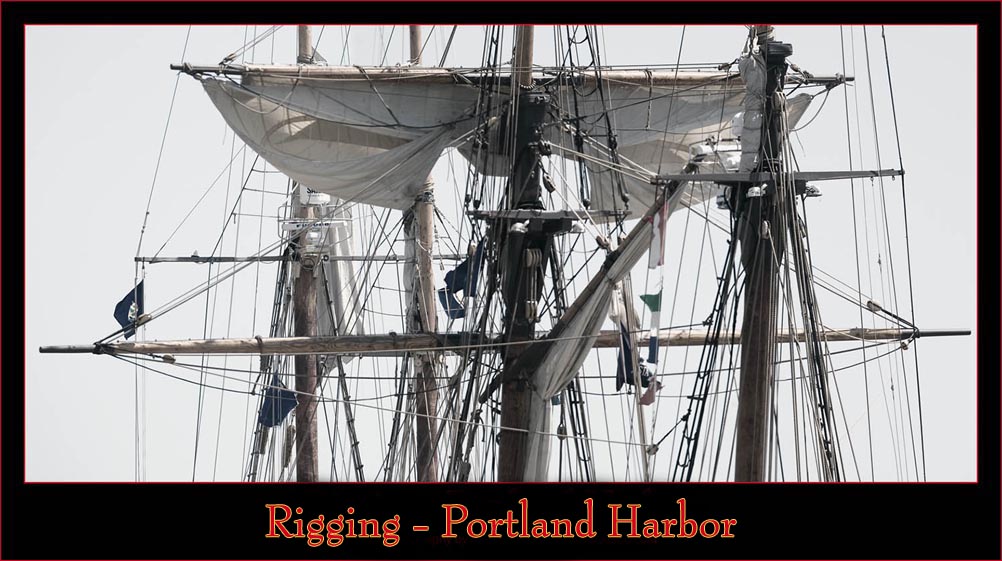
|
Main Mast, Spars & Main Top
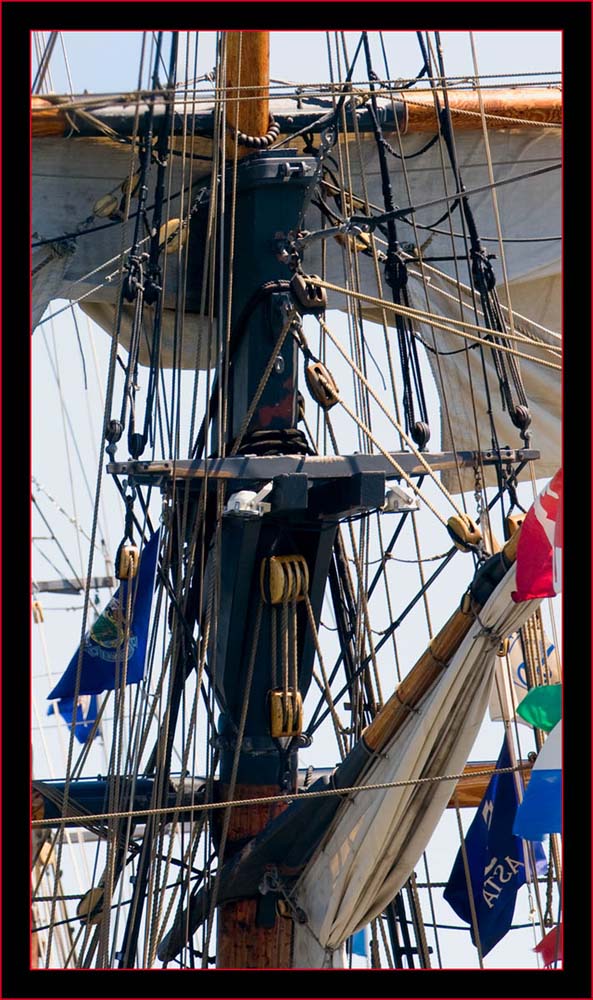
|
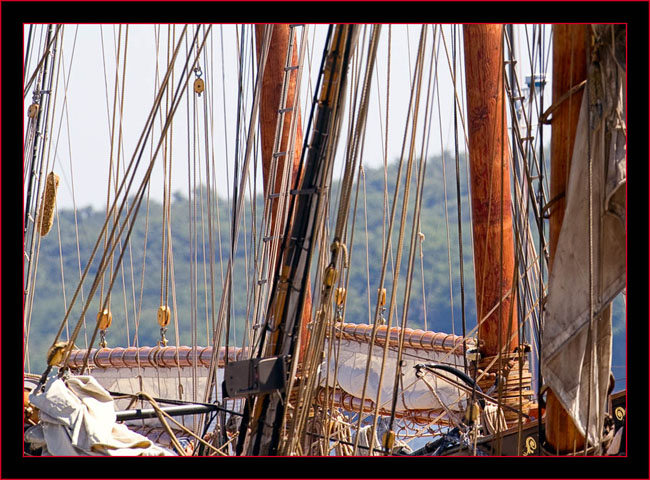
|
Schooner at berth - Portland HarborThe Amistad and another schooner were berthed together. This photograph is a view of the rearward vessel's masts from my observing point. |
Pilings and Gulls on a Lazy Sunday - Portland Harbor
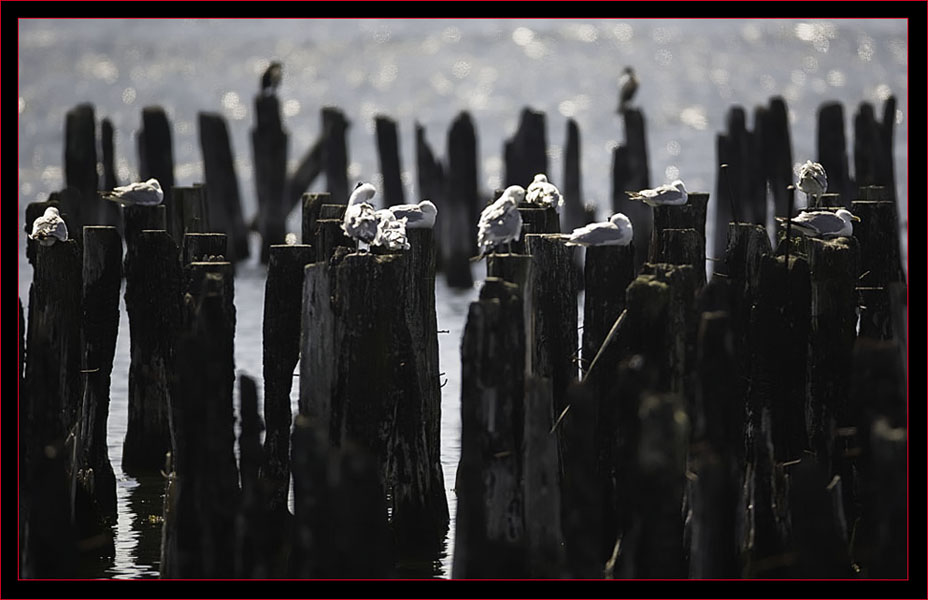
|
The last Field Session- Labor Day Weekend - August 2008
This group of images, taken at the camp of Linda’s brother & sister-in-law at Thompson Lake in Oxford, represents my last outing in the timeline this article documents. I isolated all the mycology shots taken over the summer and will present them separately as the next and final page of this photojournal.
|
Linda’s family gathered at Ken & Wendy’s place for a cookout over the long weekend that marks the end of summer in our picturesque state. Actually it more or less marks the end of tourist season here when our many visitors return home. Ken mentioned I should bring my camera equipment along as he’d spotted some interesting subjects including an adult Bald Eagle flying about and one never knows what may show up. He didn’t actually have to make this request because I rarely go off without at least a partial camera system available. Canon 1Ds Mark III/EF 600mm F/4L lens extended to 840mm, 1/80 second @ f/8, ISO 1600 with flash
|
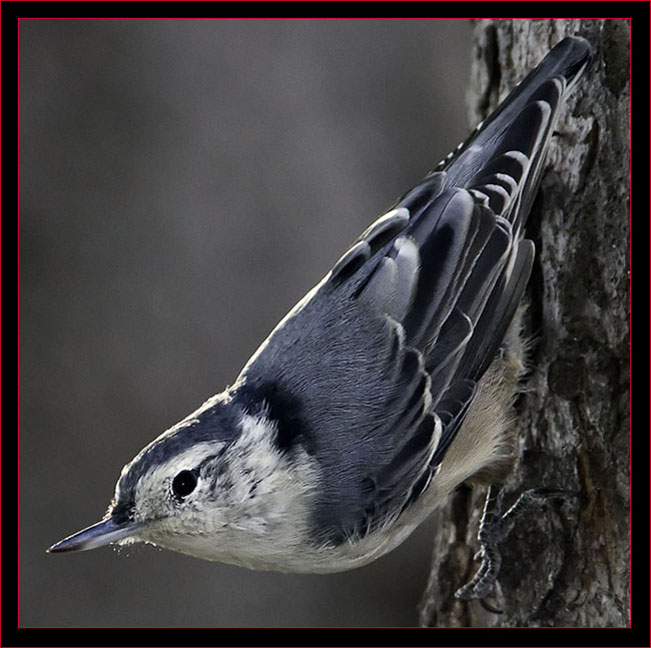
|
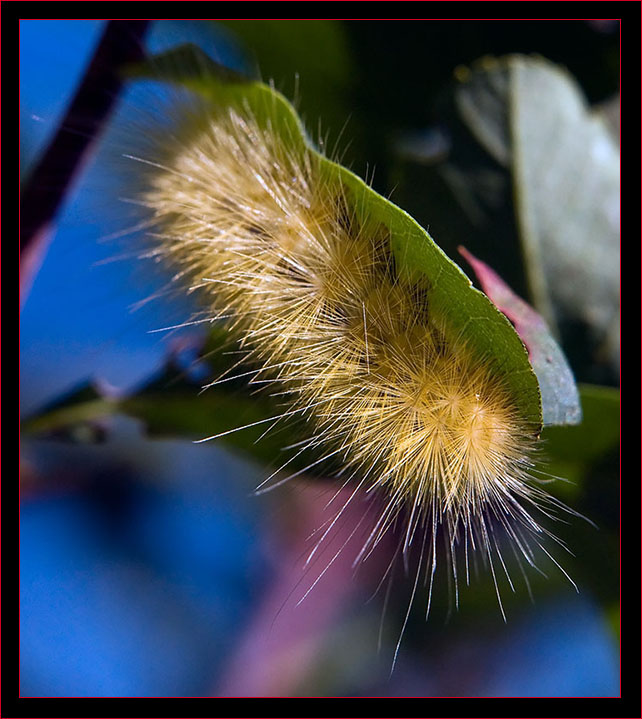
|
Yellow Bear Caterpillar, the larval stage of the Virginian Tiger Moth (Spilosoma virginica)Linda & I walked around the yard as the family gathered and chatted on the deck. The backyard borders the lake and some of the younger folks were on the pier as we searched the vegetation along the edge to see what may be around of interest. We noticed quite a few of these fuzzy caterpillars in several spots and I knew I’d be returning to take a few exposures. Canon 1Ds Mark III/EF 70~200 IS zoom lens @ 200mm, 1/1000 second @ f/8, ISO 1600; 37mm of extension tubes |
Yellow Bear Caterpillar at 100 millimeters
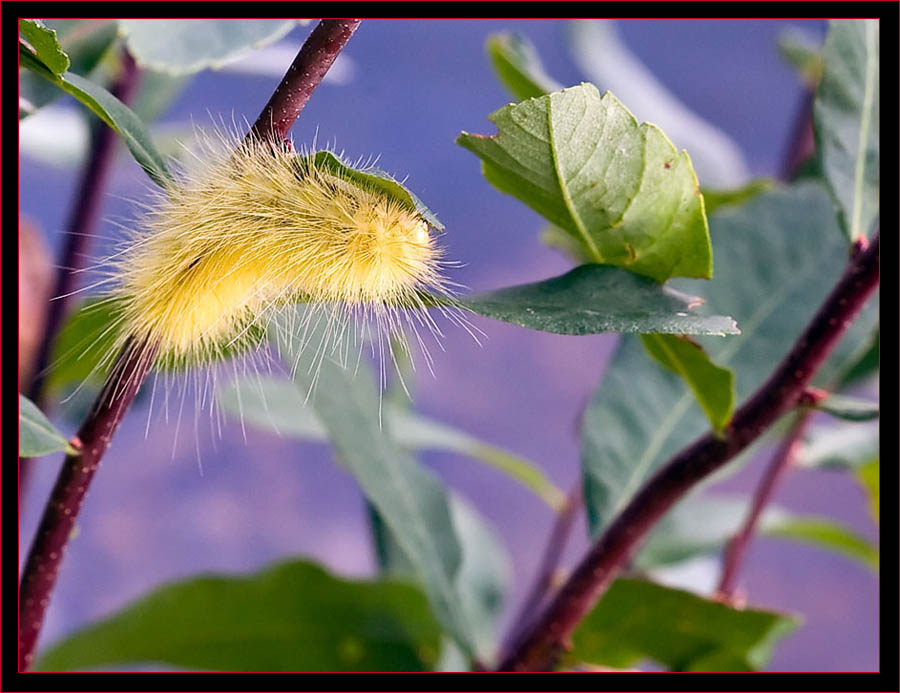
|
Yellow Bear Caterpillar in red-brown coloration - Oxford, Maine...I took multiple exposures on the caterpillars. Although commonly referred to as the Yellow Bear, you can see that they have varying hues as this specimen indicates. Information at hand states the colors can be beige/yellow to red-brown/black and everything in between. They were also noted as one of the most common caterpillars’ one is likely to observe. You’ll notice this shot and the one above were taken with my 100mm macro at a slow shutter speed at a higher ISO – this was the type of day it was – a bit dark with short periods of bright sunlight. Canon 5d/100mm f/2.8 macro lens, 1/25 second @ f/8, ISO 400 with flash
|
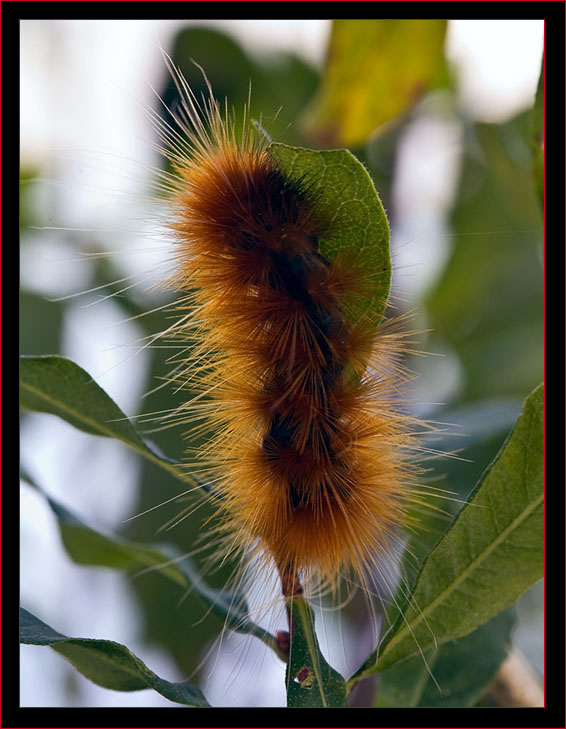
|
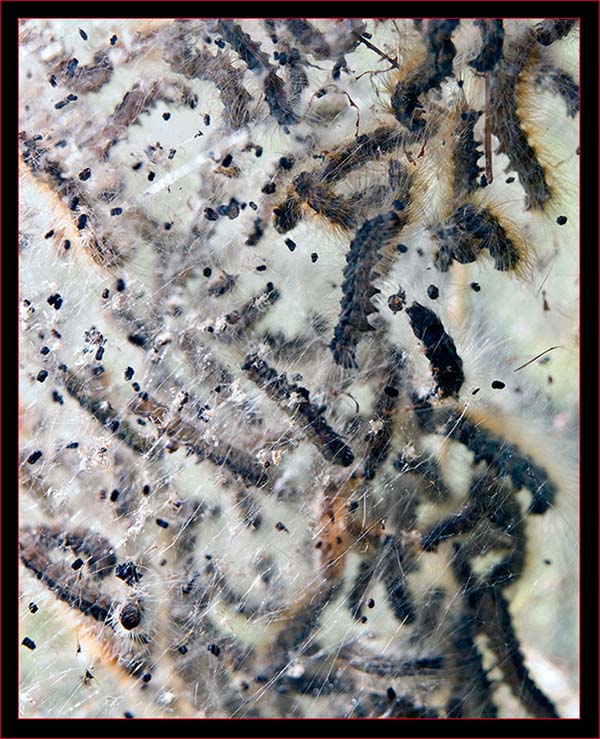
|
View into the Caterpillar nest...Linda didn't think too highly of the next shots including the one at left. I recognize these critters are common in our area and you can see these sometimes large and almost frightening nests around frequently, but I’m not certain what species they are to post it here. My intent was to shoot down through the all the layers of nastiness and I believe this was accomplished... This view and the one that follows are looking down through several inches of material. One can certainly realize the sense of distance between the layers and the various objects included within. This assembly wasn’t in the easiest of places to photograph but I had the advantage of the subject at almost eye level. This allowed a comfortable working height as I set up the exposures. The reduced versions of these images simply don’t do justice to the overall image. I wish you could join me at my 30 inch enhancing monitor for a 100% view - you could then truly appreciate the 21 Megapixel resolution of the 1Ds Mark III camera... Canon 1Ds Mark III/EF 70~200 IS zoom lens @ 155mm, 1/200 second @ f/8, ISO 1600; 37mm of extension tubes |
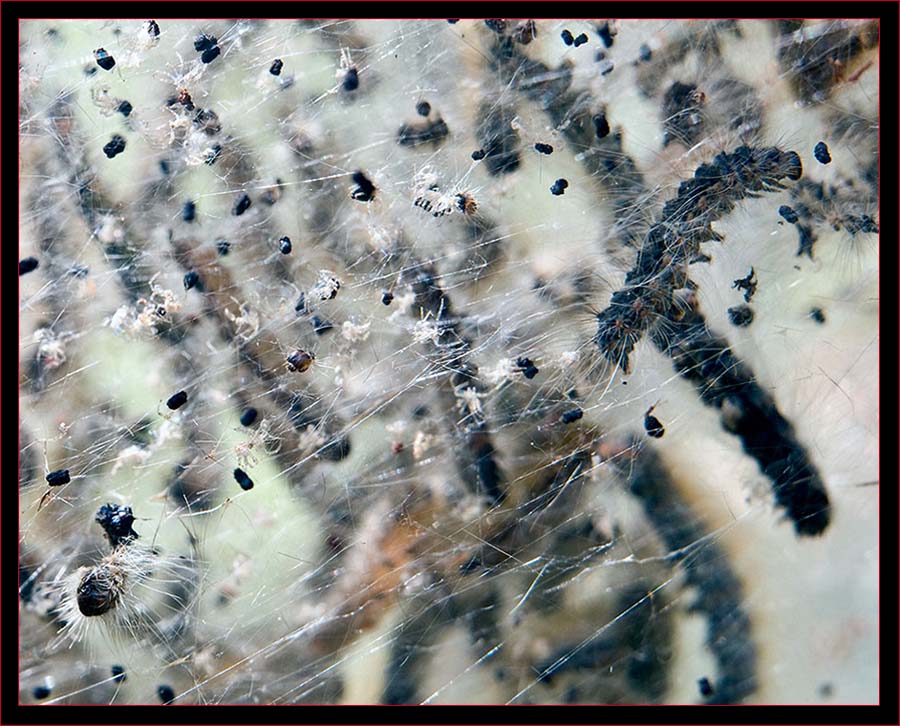
|
Eastern American Toad on Mushroom...I wouldn’t bet my life’s savings on the veracity of this toad identification but what research I conducted leads me to believe this is correct. Linda found this creature on the lawn not far from the lake and carried it over to where I was photographing some mushrooms. I was set up to shoot straight down with the focus adjusted on a subject so asked her to place the toad on the mushroom below my lens. She did and I had about a millisecond to act before it took off... I don’t blame the toad of course, I wouldn’t have appreciated being manhandled either and wouldn’t have hung around. I got one exposure and at right you can view it. Unlike the unfortunate Tobacco Hornworm Linda found on her tomato plants in the garden, this animal hopped off to new adventures. Linda told me I should indicate how small this animal was in reality... She remembered the toad as being no more than an inch or so in length and said I should point this out because it’s difficult to ascertain in this cropped 1Ds view. Canon 1Ds Mark III/EF 70~200 IS zoom lens @ 155mm, 1/30 second @ f/8, ISO 1600; 37mm of extension tubes with flash
|
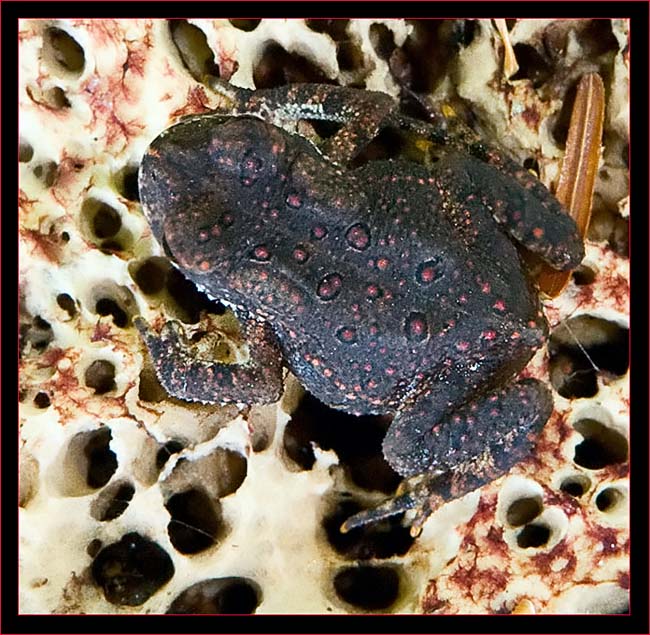
|
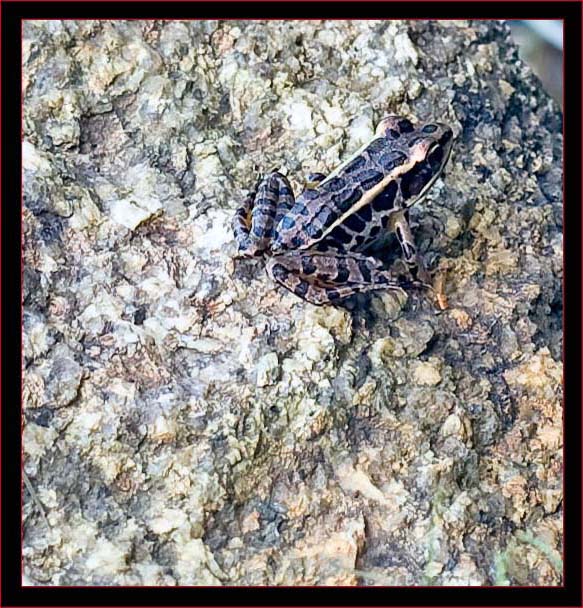
|
Pickeral Frog at Thompson Lake...I would comment that being a nature photographer, especially for macro shooting can be a great deal of work... I’m neither all that young nor petite by any stretch of the imagination these days. Crawling around on the ground making adjustments to get the shot over multiple hours can be downright exhausting. I believe this was my thought process at the time I took the image at left and it brought this to mind. I was investigating the vegetation next to the water where I’d seen some tiny damselflies – my first thought was, ‘Oh Yeah Baby, Damselflies! If I can get some decent shots on these my bud Fitz on Skidaway Island will be mighty impressed...’ Then I viewed this Pickerel Frog sitting on a rock next to the water. Like with the toad exposure, I had mere seconds to react before the frog took off to parts unknown. My 5d was tripod mounted but there wasn’t time to line up a proper shot, I part supported, part handheld the camera and got off two quick exposures... What I read about this frog was interesting. It protects itself by producing bad-tasting skin secretions that are toxic to many predators. Snakes include frogs in their diets whenever they can but avoid this one for a reason. I also read that it was given the name, ‘pickerel’ because it was often used as bait by anglers fishing for that species. By the way, I never did have an opportunity to image the damselflies... Sorry Fitz. Canon 5d/100mm f/2.8 Macro lens, 1/30 second @ f/8, ISO 400 |
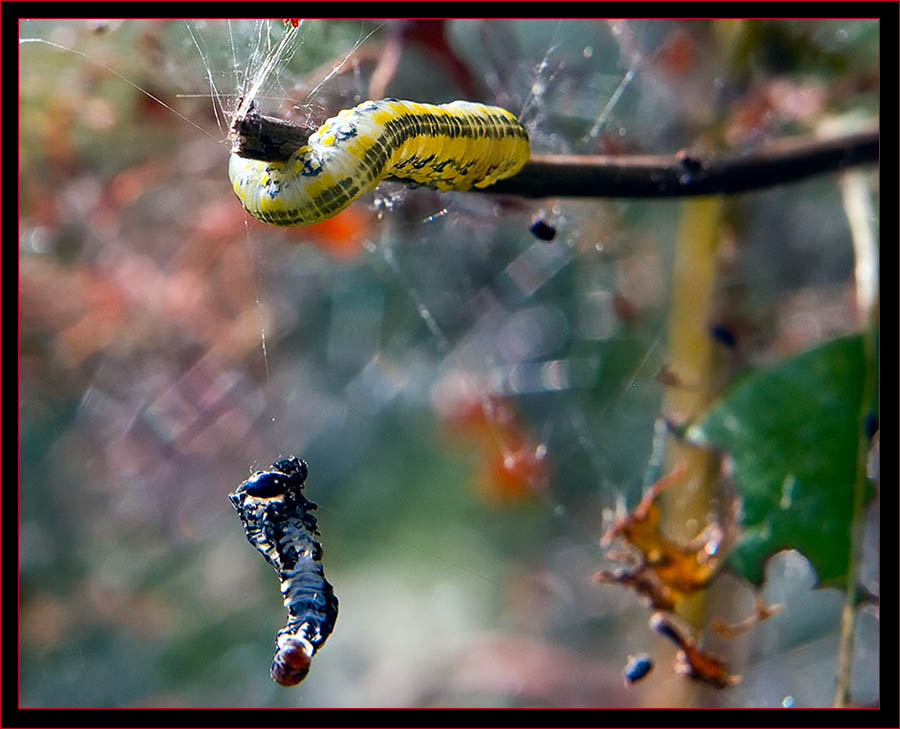
|
Injured Female Black-shouldered Spinyleg Dragonfly (Dromogomphus spinosus)...
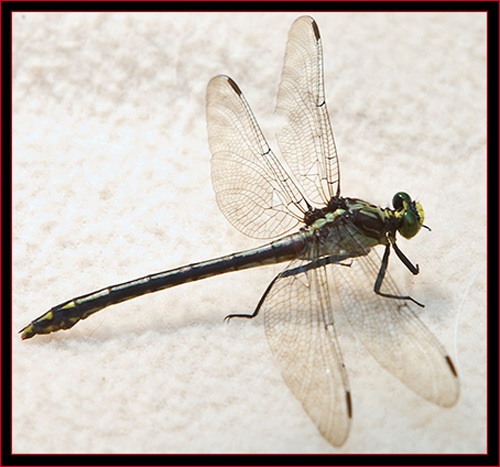
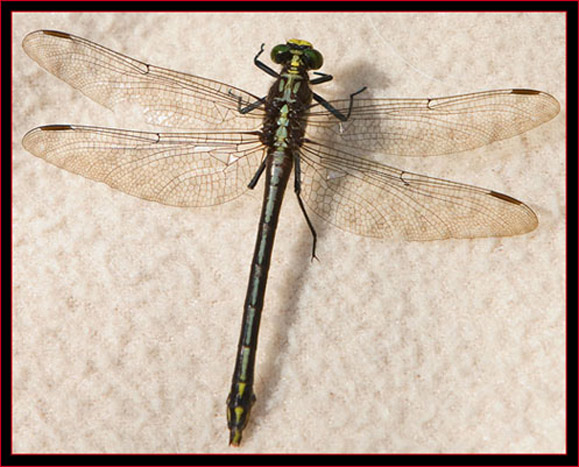
|
Blue Passion Flower (Passiflora caerulea)I’m going to close out this section with three photographs of Wendy’s Blue Passion Flower. This plant was on her deck and I thought it would make a great subject for some close in work. I like all three but the third in this group is my favorite as it captures the colorful starburst effect best in my view. Canon 1Ds Mark III/EF 70~200 IS zoom lens @ 173mm, 1/320 second @ f/8, ISO 400; 37mm of extension tubes with flash
|
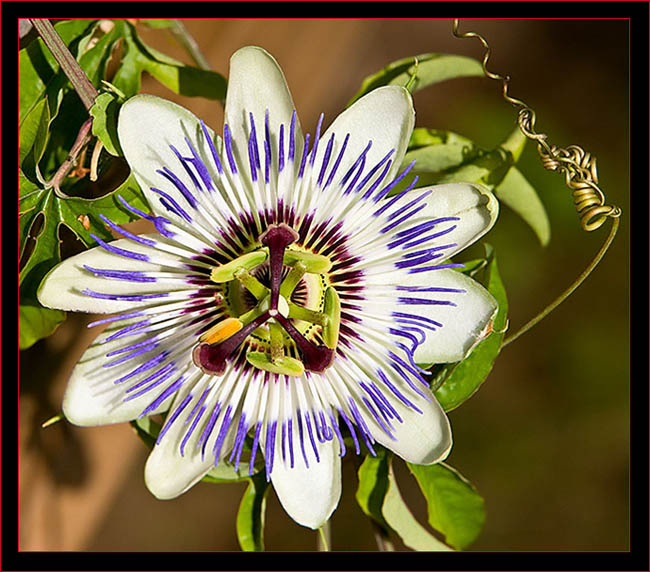
|
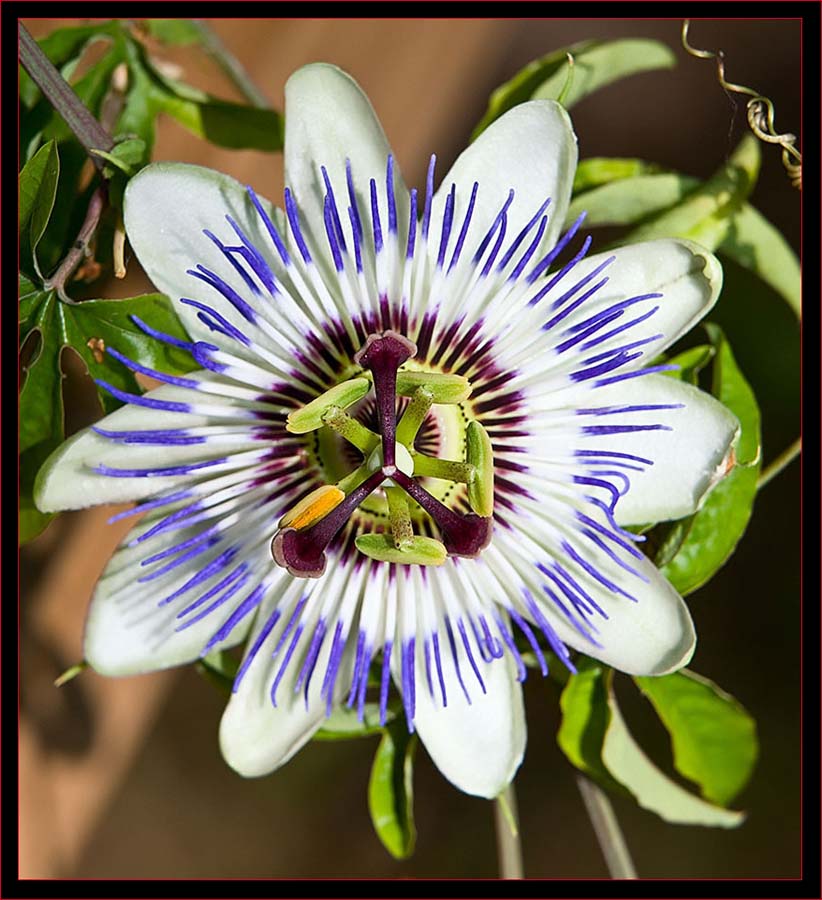
|
Blue Passion Flower...
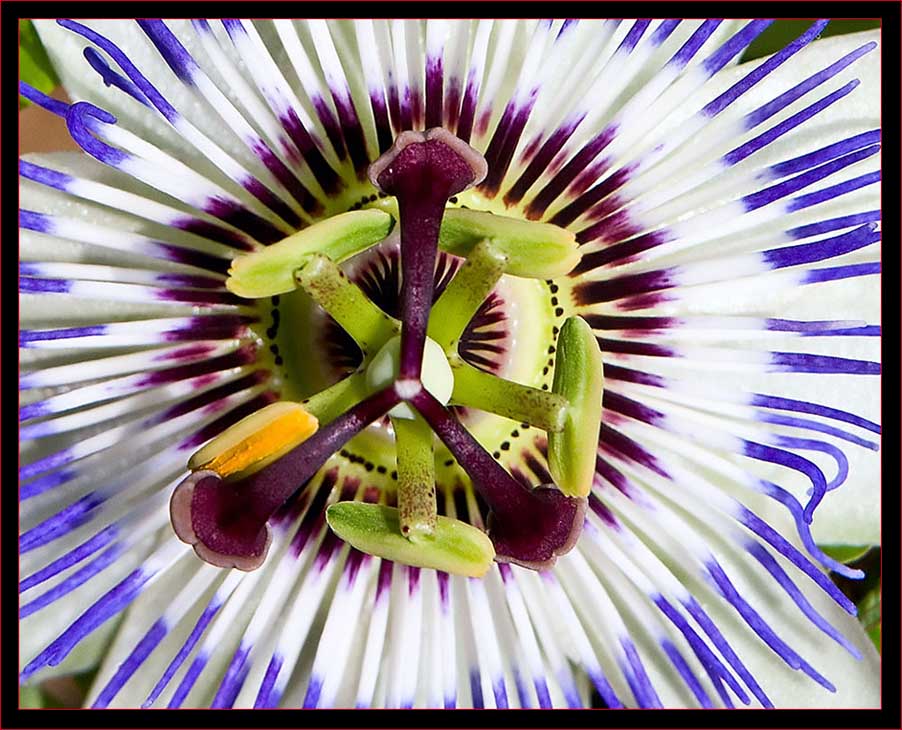
|
Before we go to the Mycology shots....
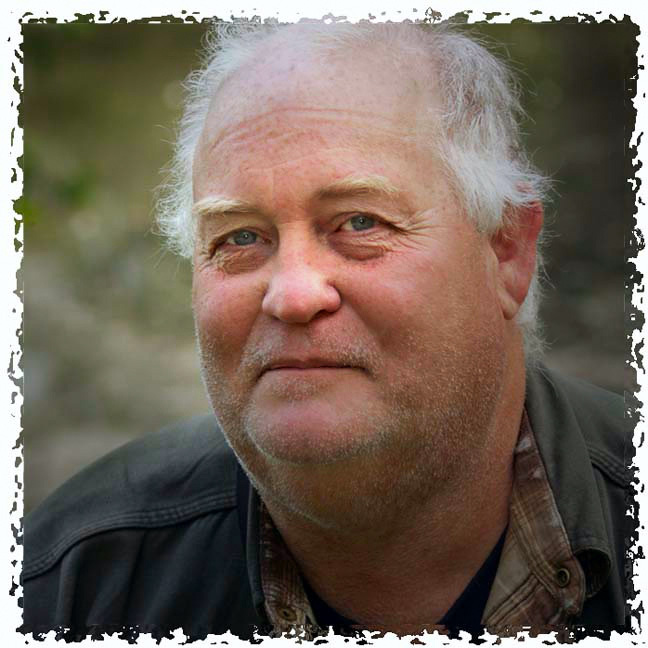
|
Kiro in the field - A thing of beauty is a joy forever...I’m going to leave this page with this frightening spectacle and a few comments... Here I am at Evergreen Cemetery after more than two solid weeks of birding bright and early every morning with hours afterwards at the computer... A fellow photographer took this image, John Ferris. We were talking after a birding session one morning and he was telling me about his portrait efforts. As a demonstration, he had me move as directed and took this shot with his Canon camera and 70~200 zoom. I like this image and you can see why I don’t often get in front of the lens, but I actually believe this shot does tell the tale. And yes, I was every bit as weary and scraggly as this shot suggests – however I was a happy guy & enjoyed every minute behind the lens... If any of you viewing this photojournal read the introductory text comments about my ‘not having done much’ photographically over the summer outside of the May bird migration, you now have a fair sampling of my efforts over the period this article depicts. This includes many images but I can state without equivocation the postings here are minor in relation to my archived photographic files from the summer. There is one section left, intentionally isolated so the subjects could be presented together as a group. The next page consists of my Maine fungi photographs... |

Kiro
October 2008
October 2008